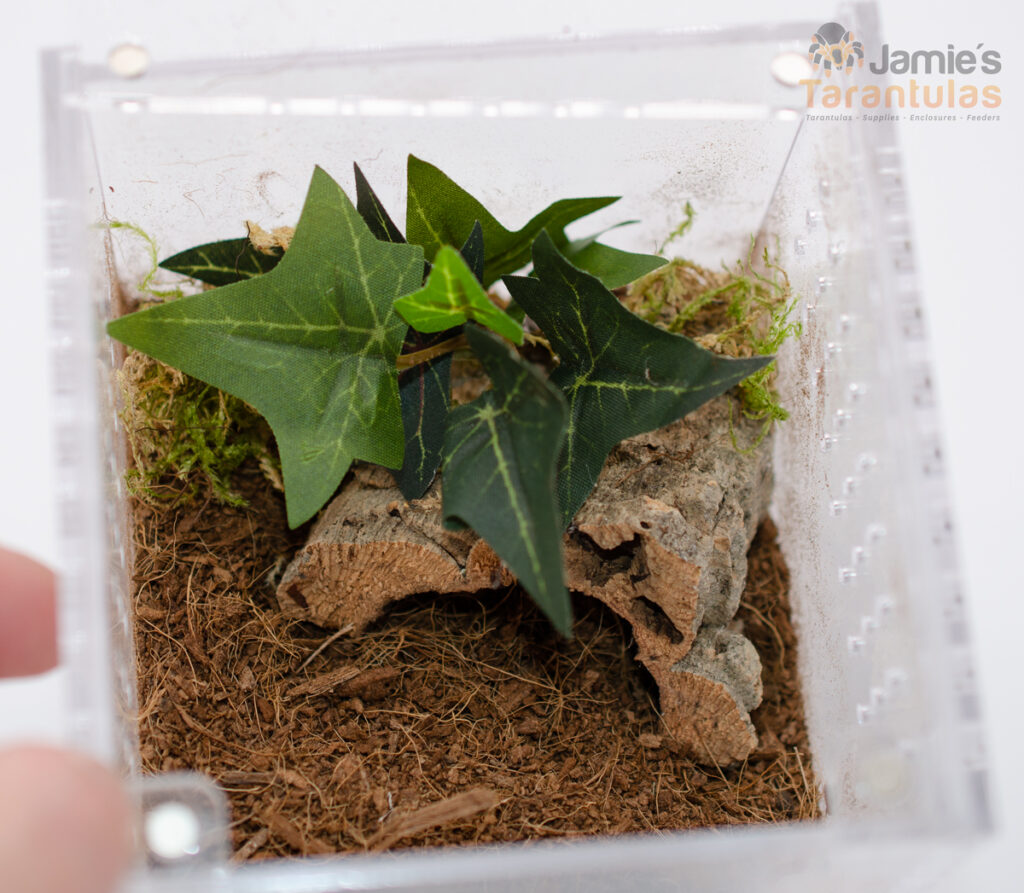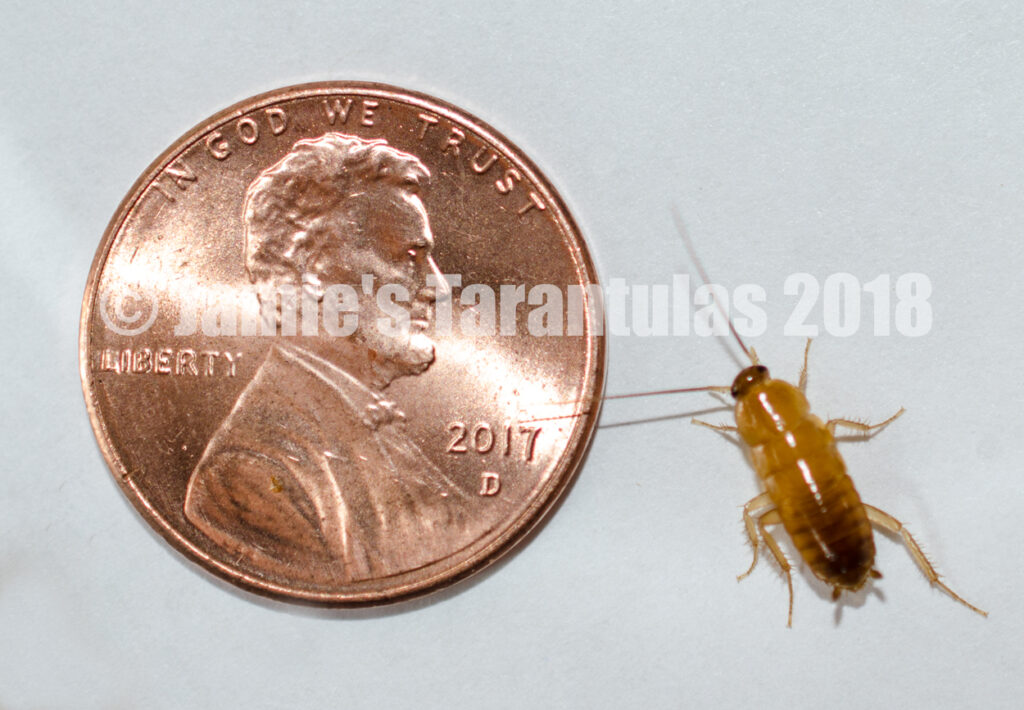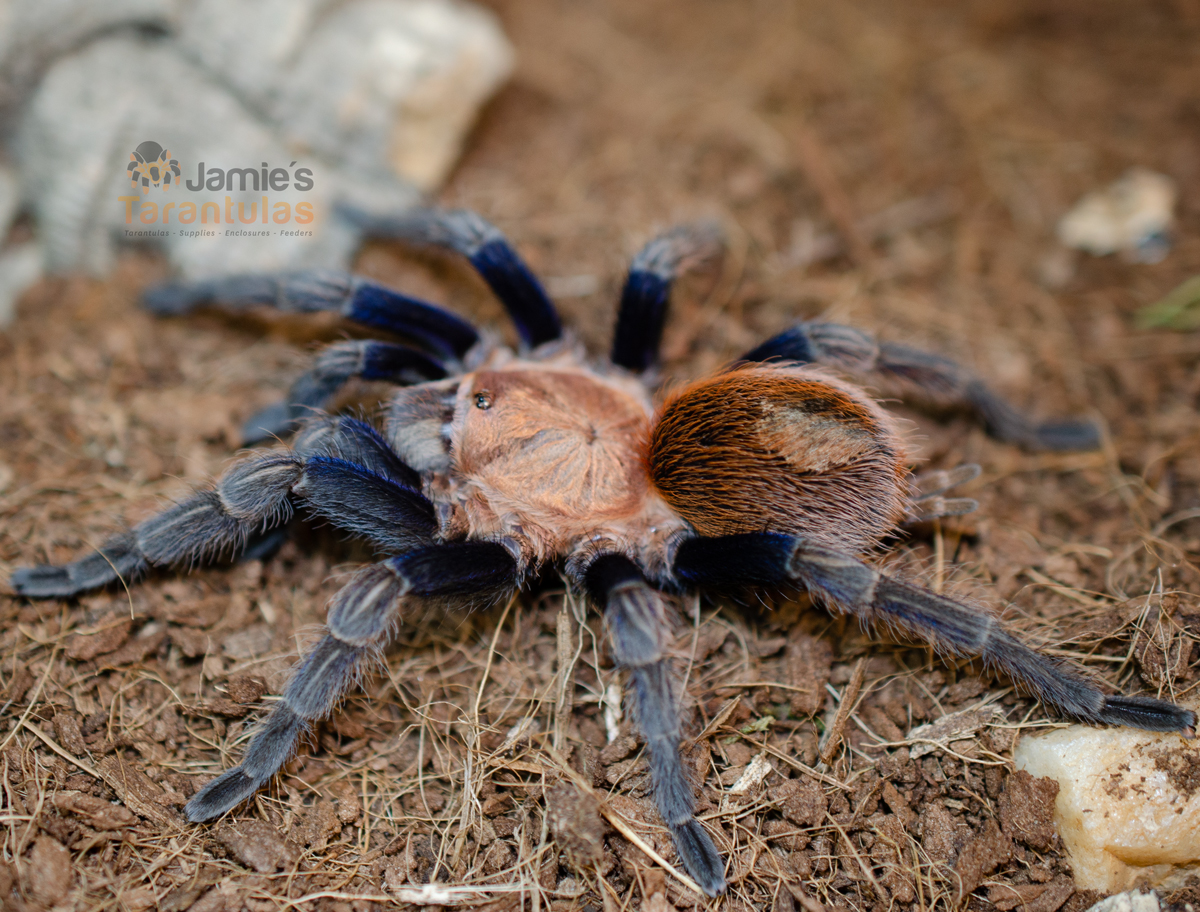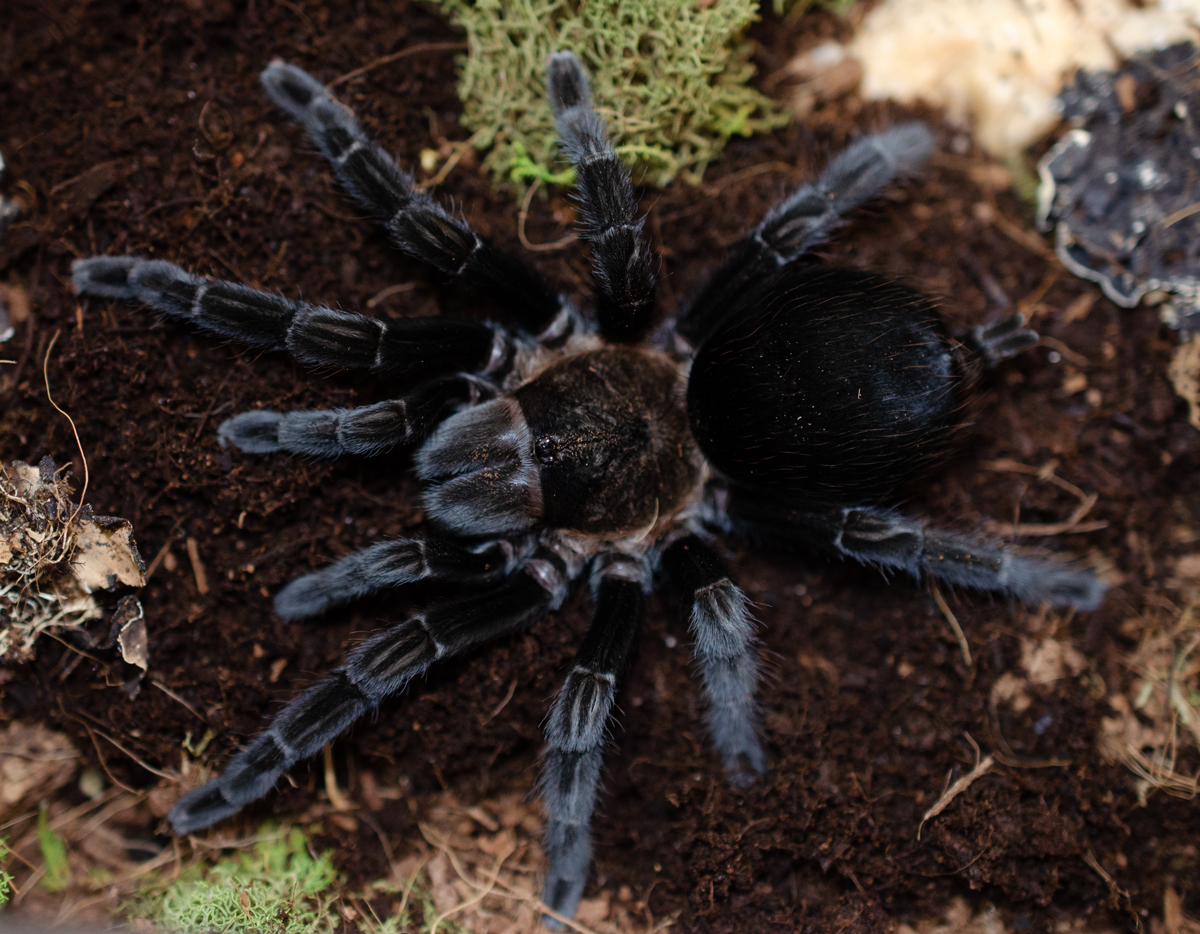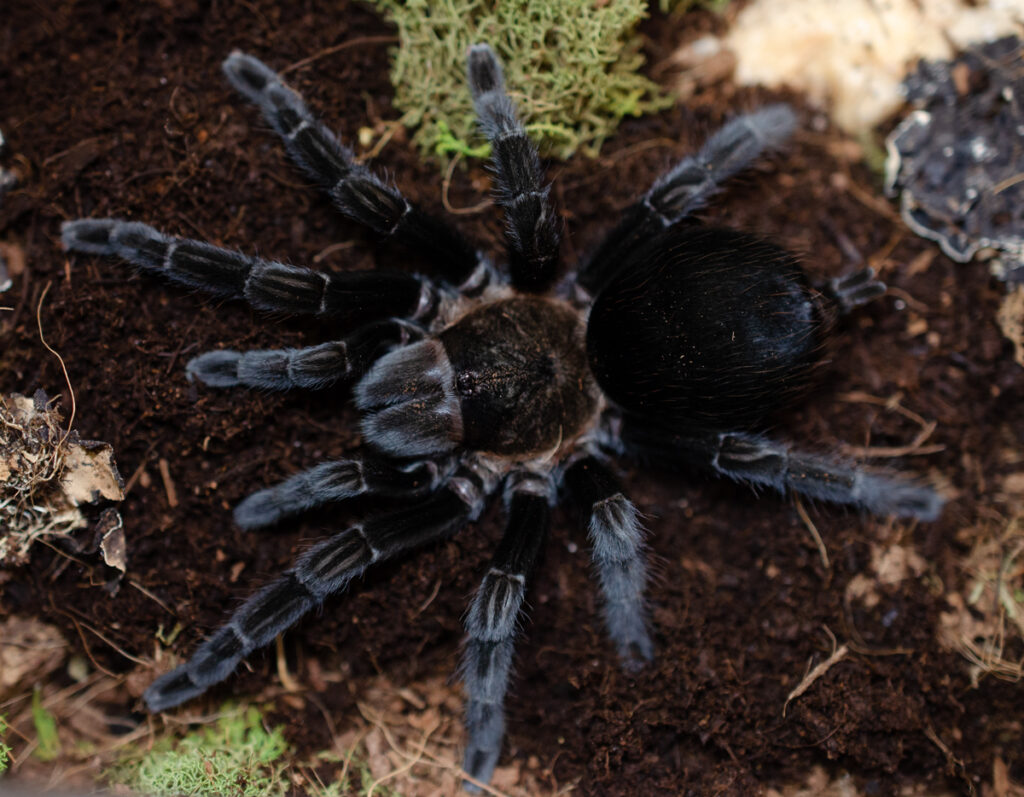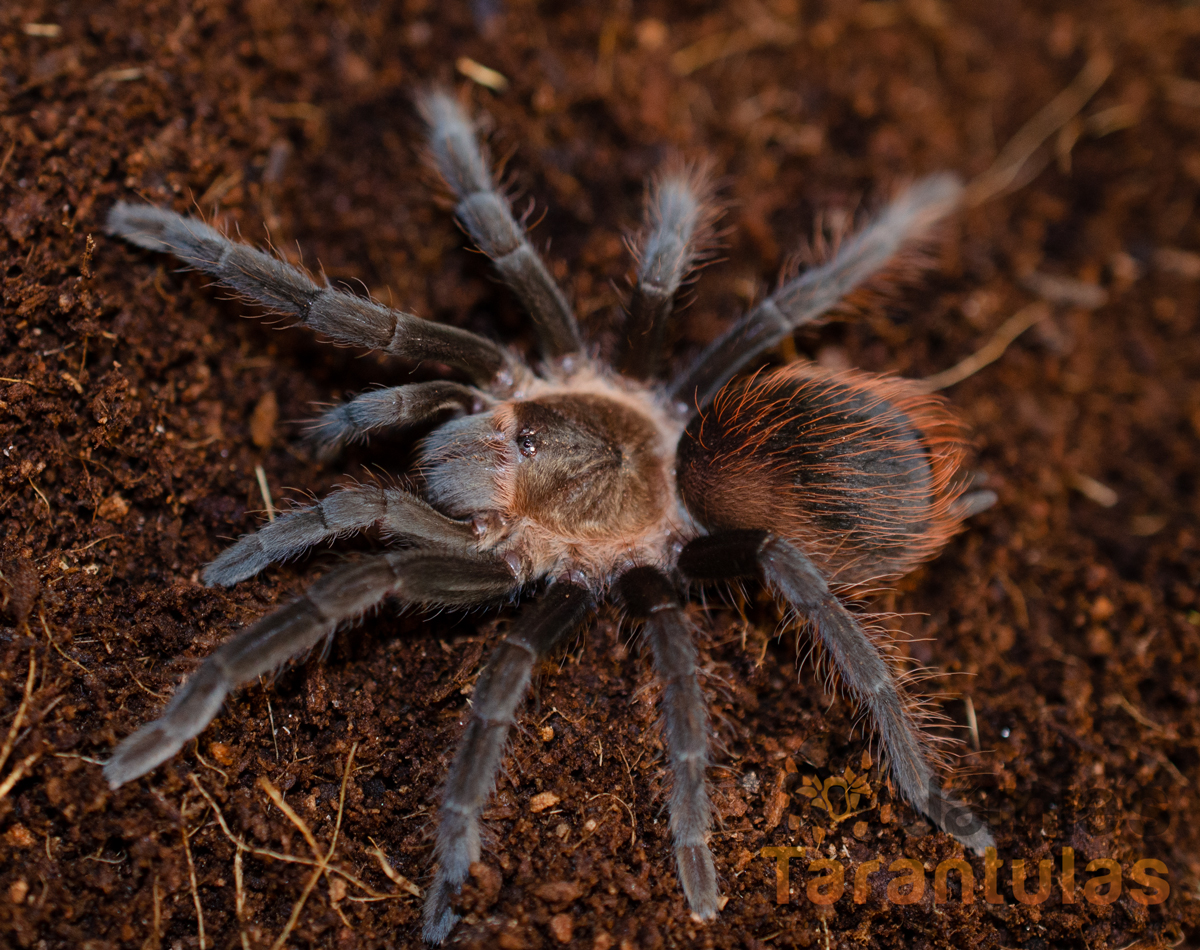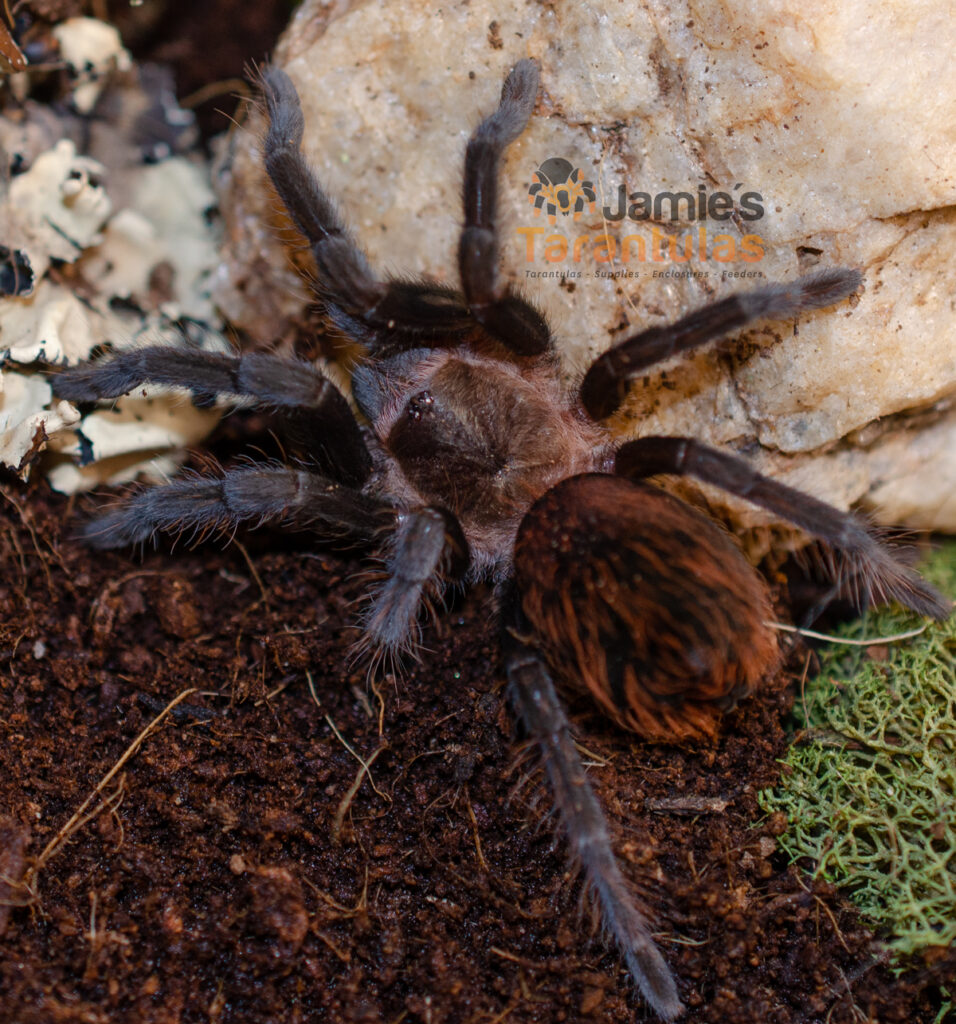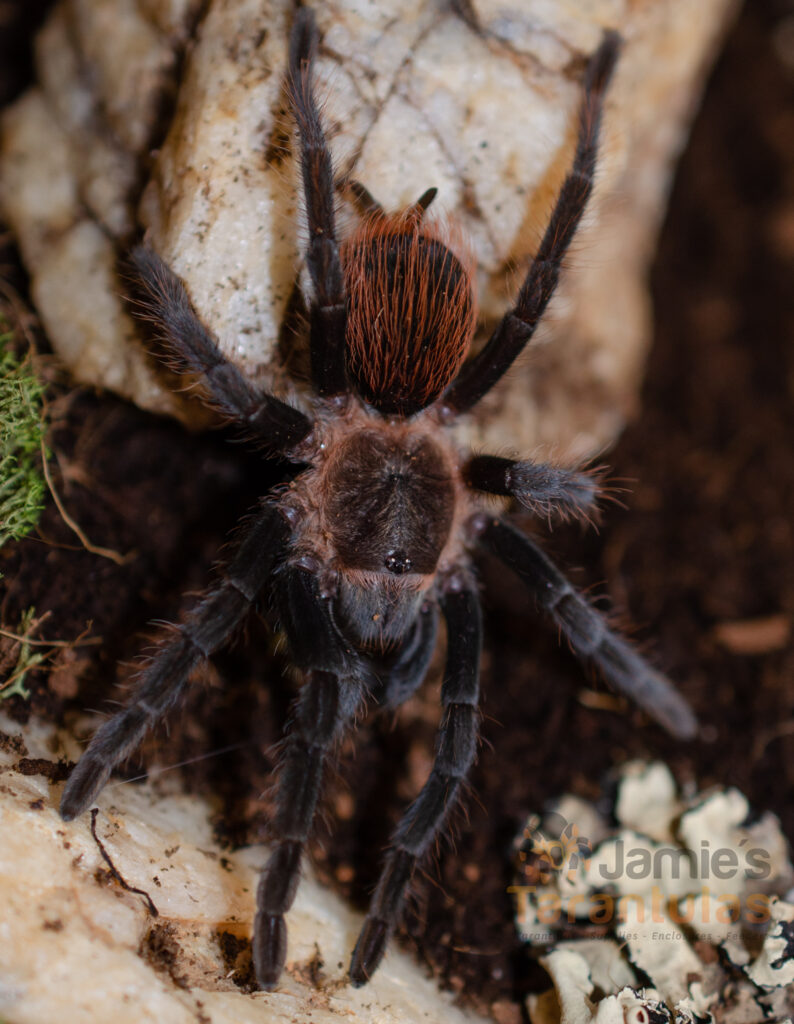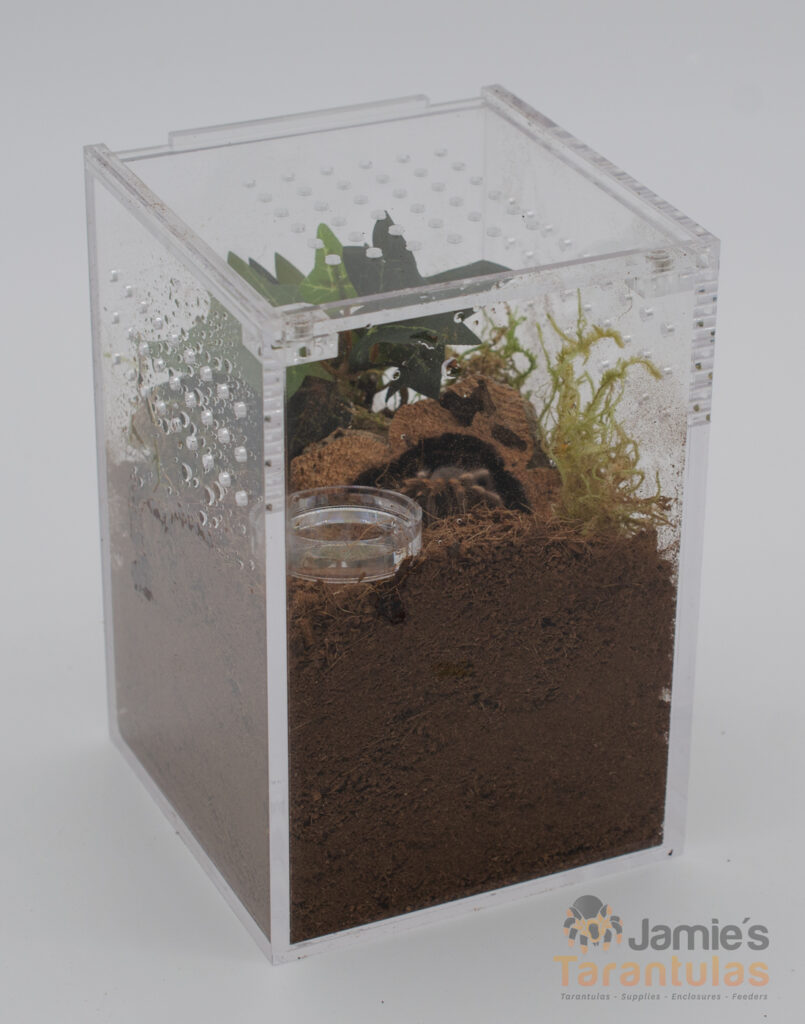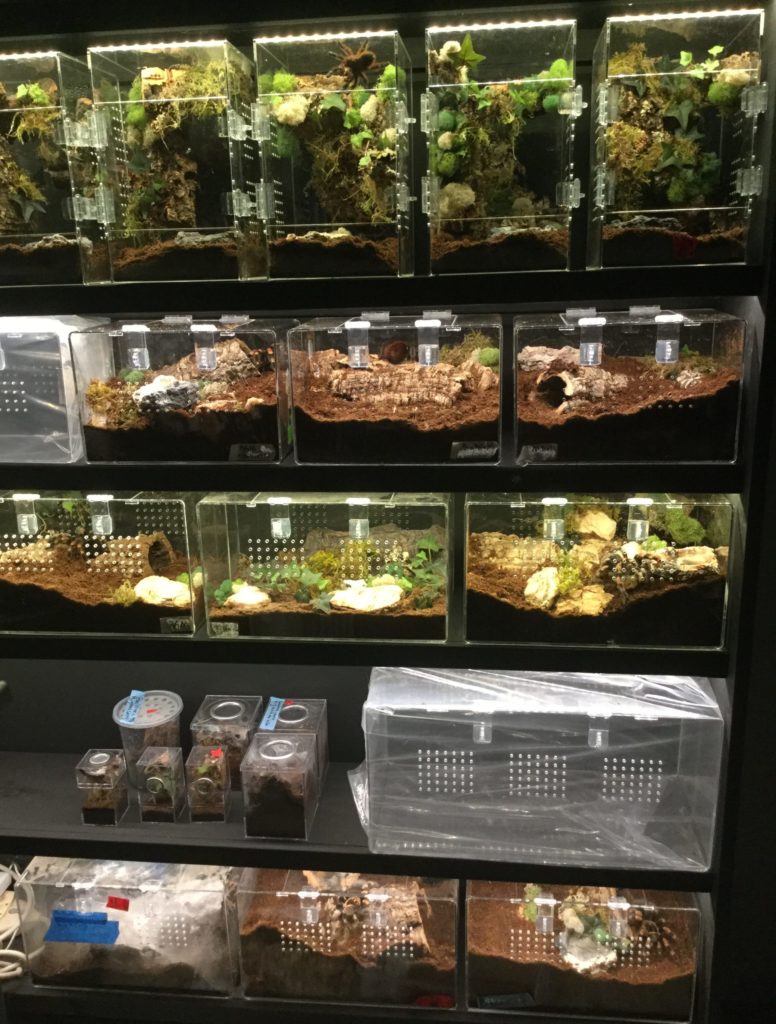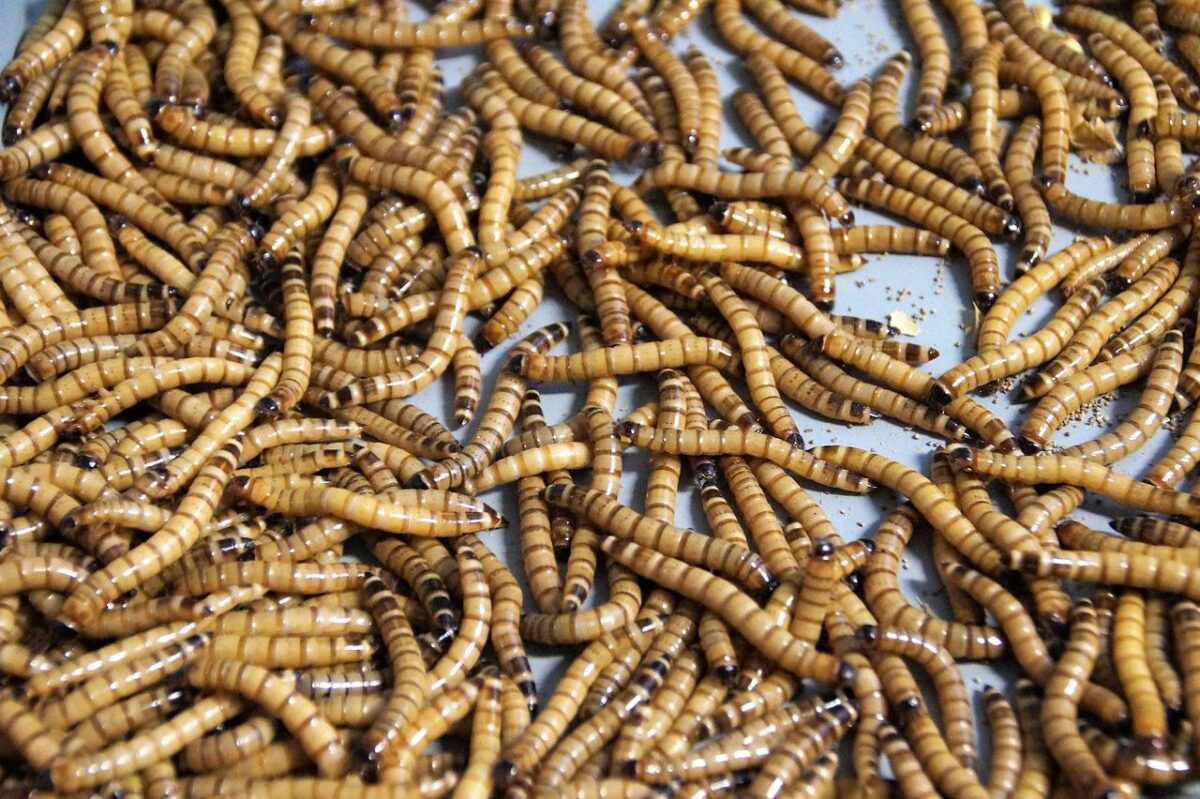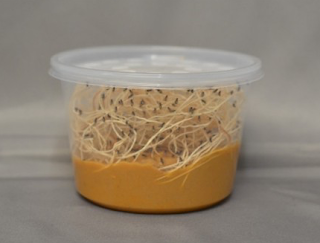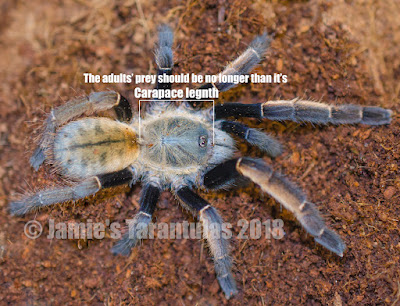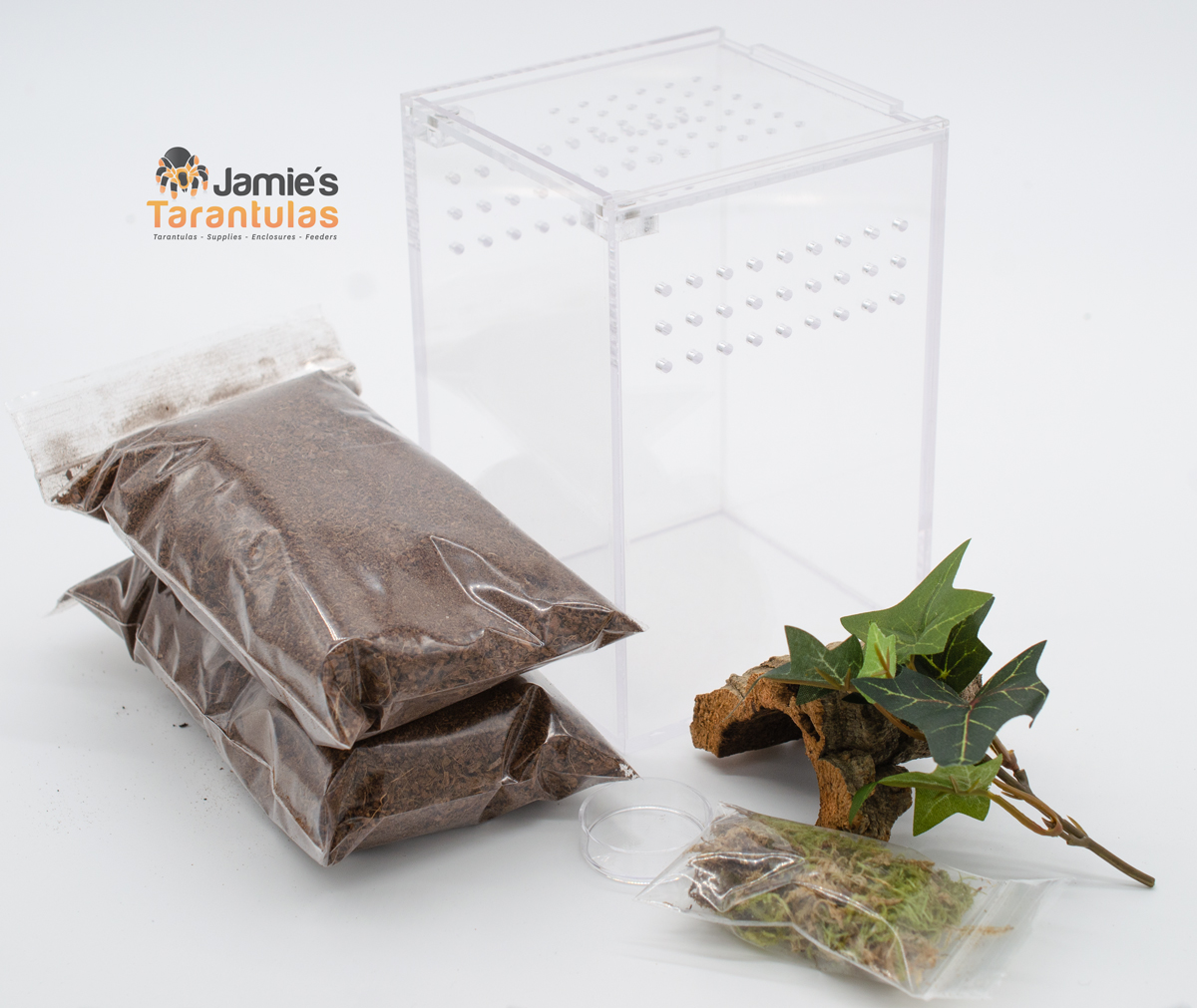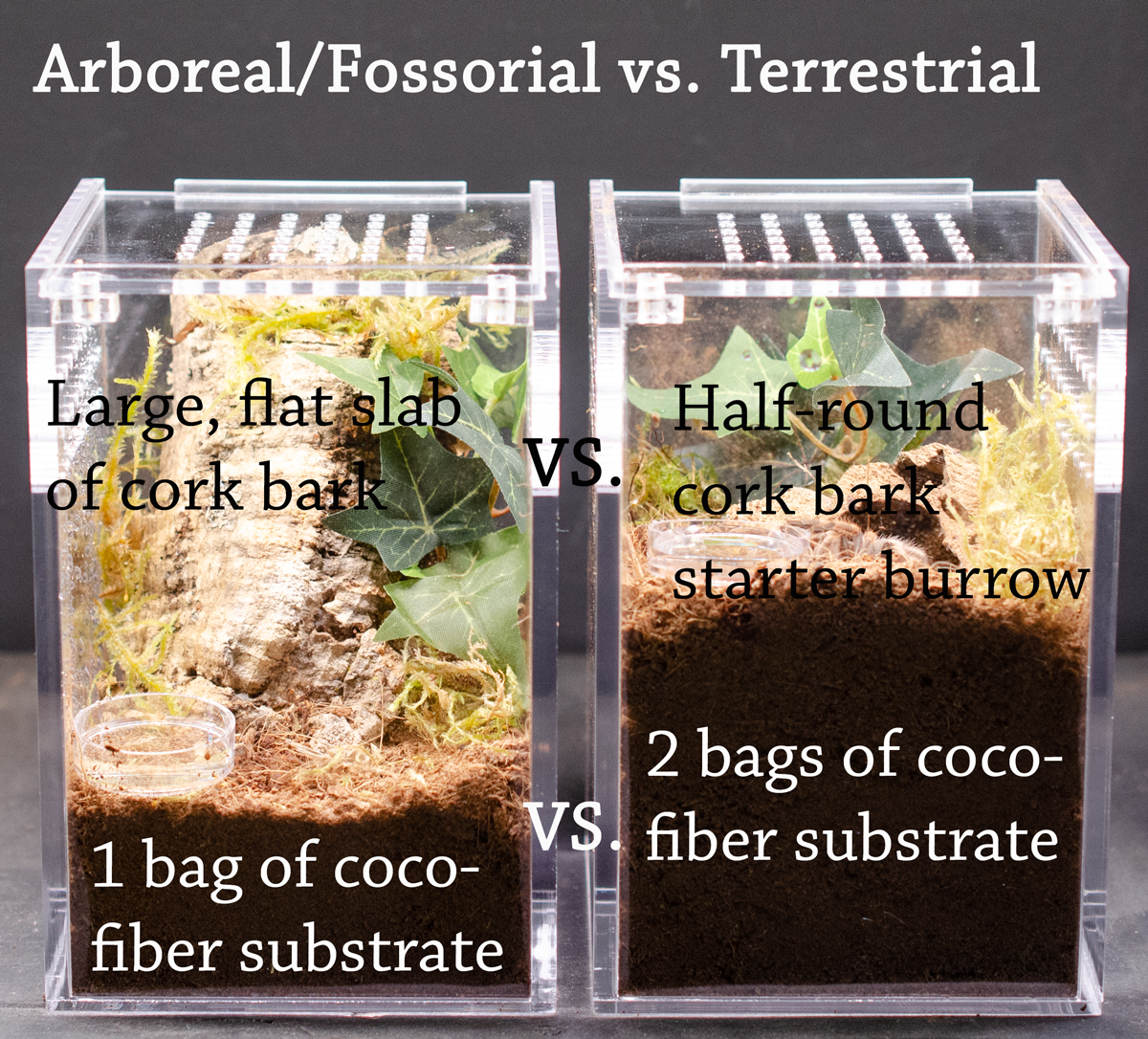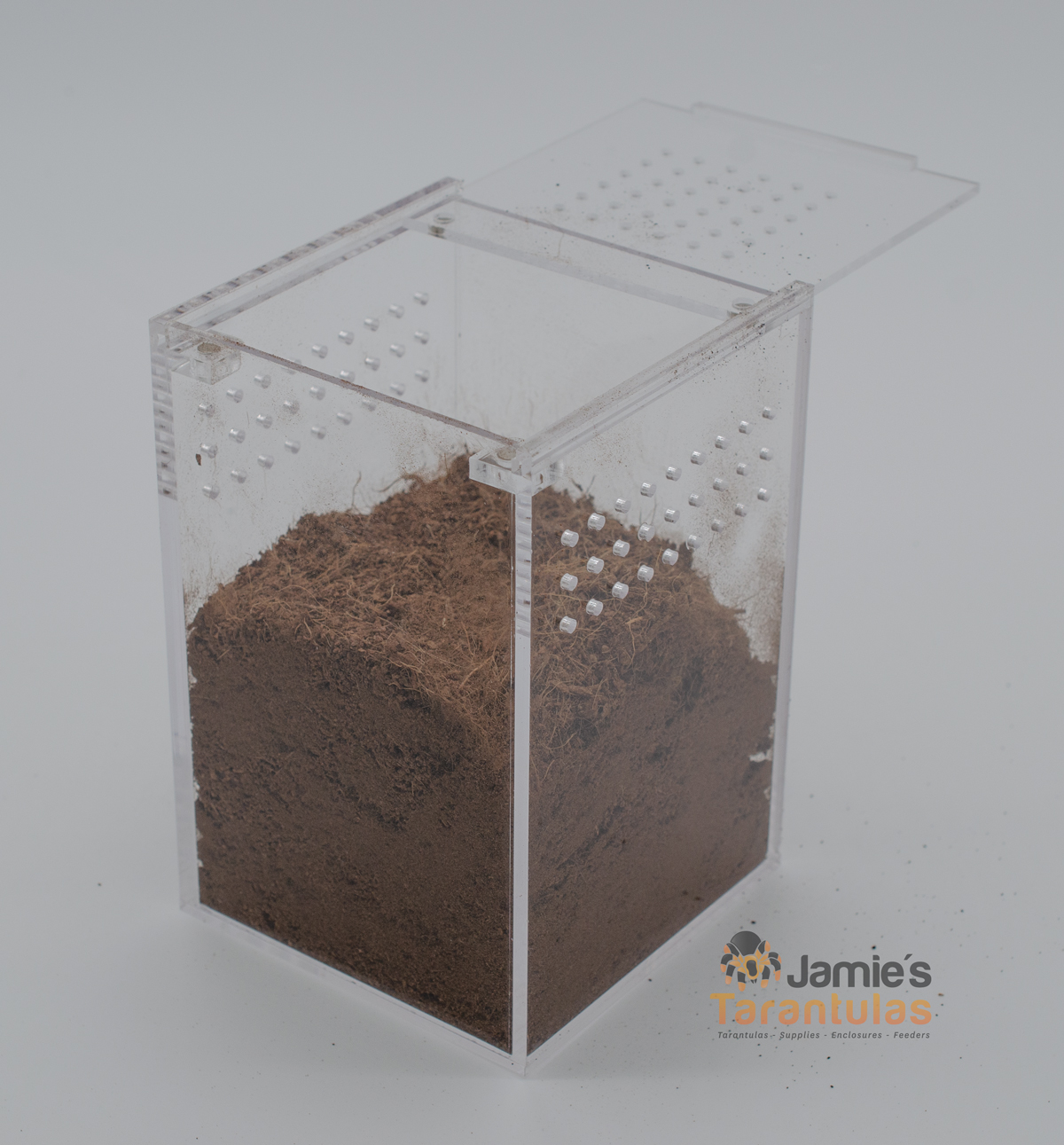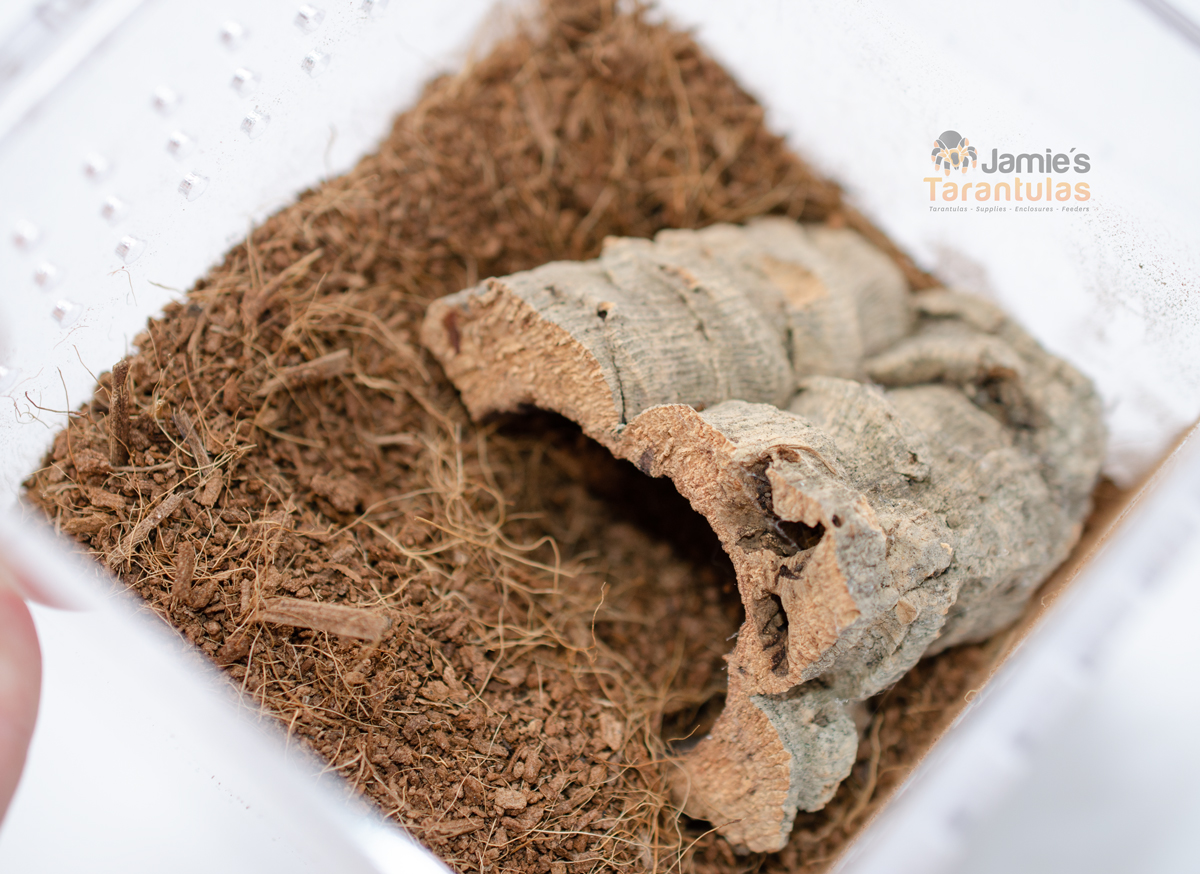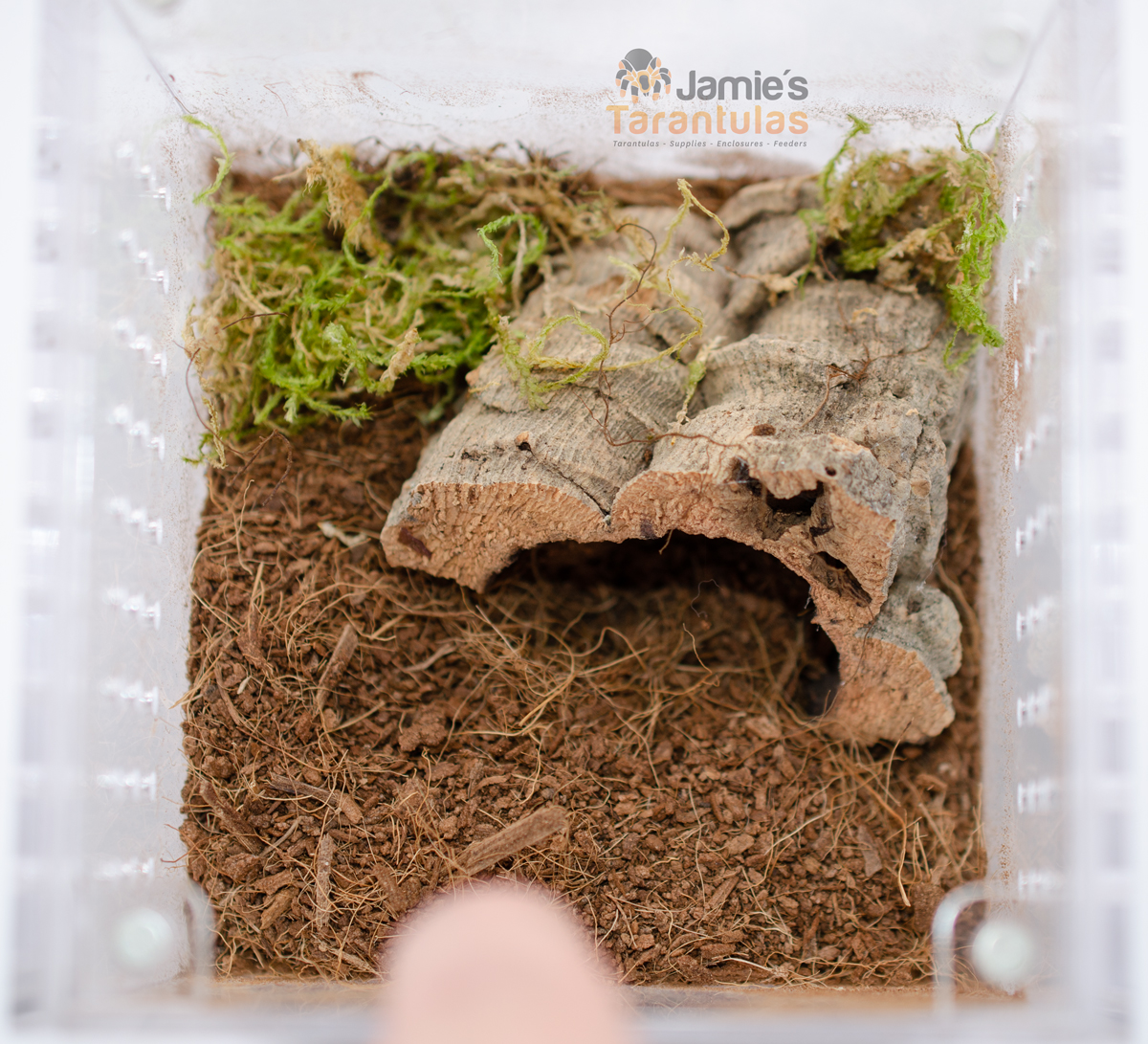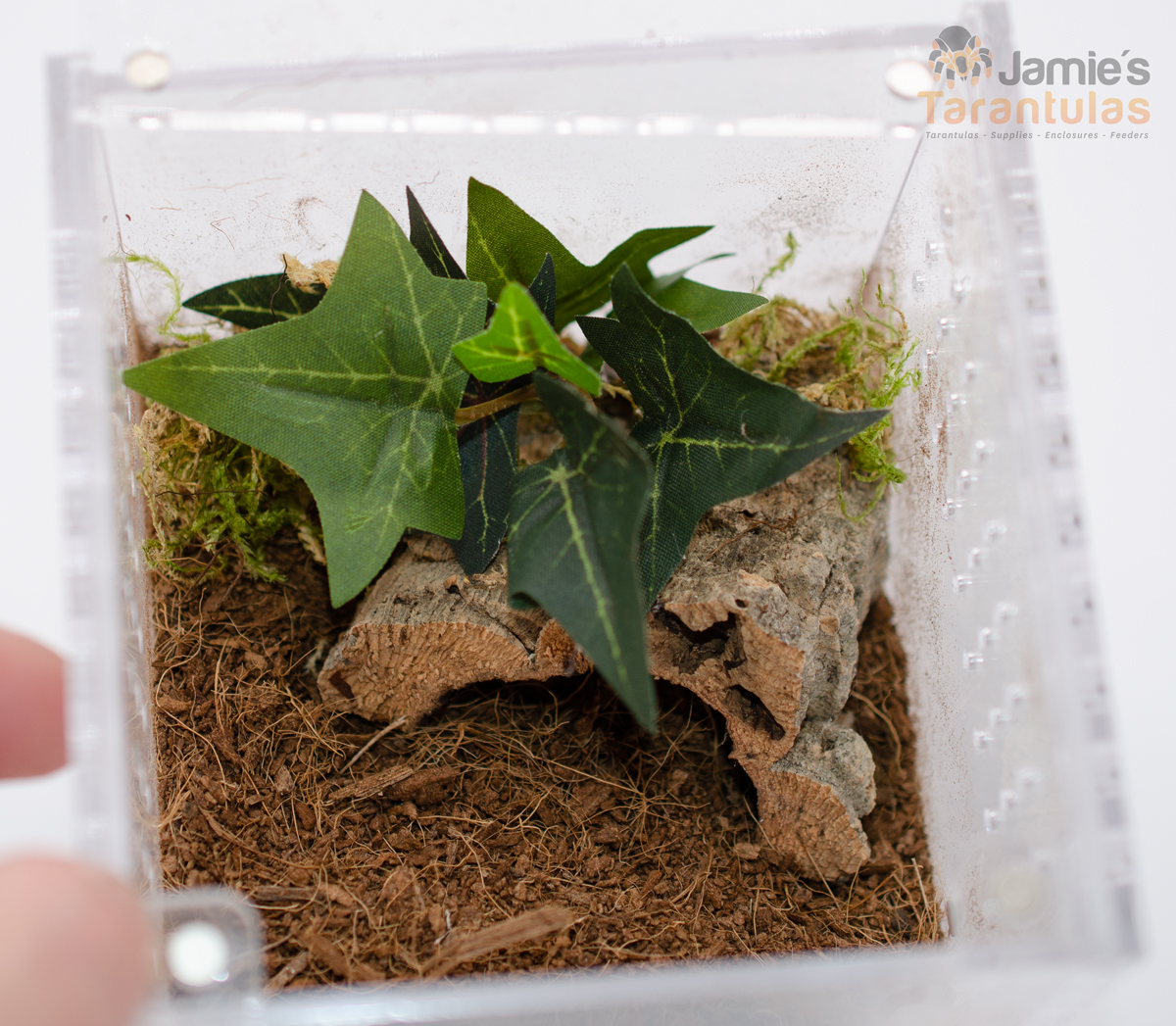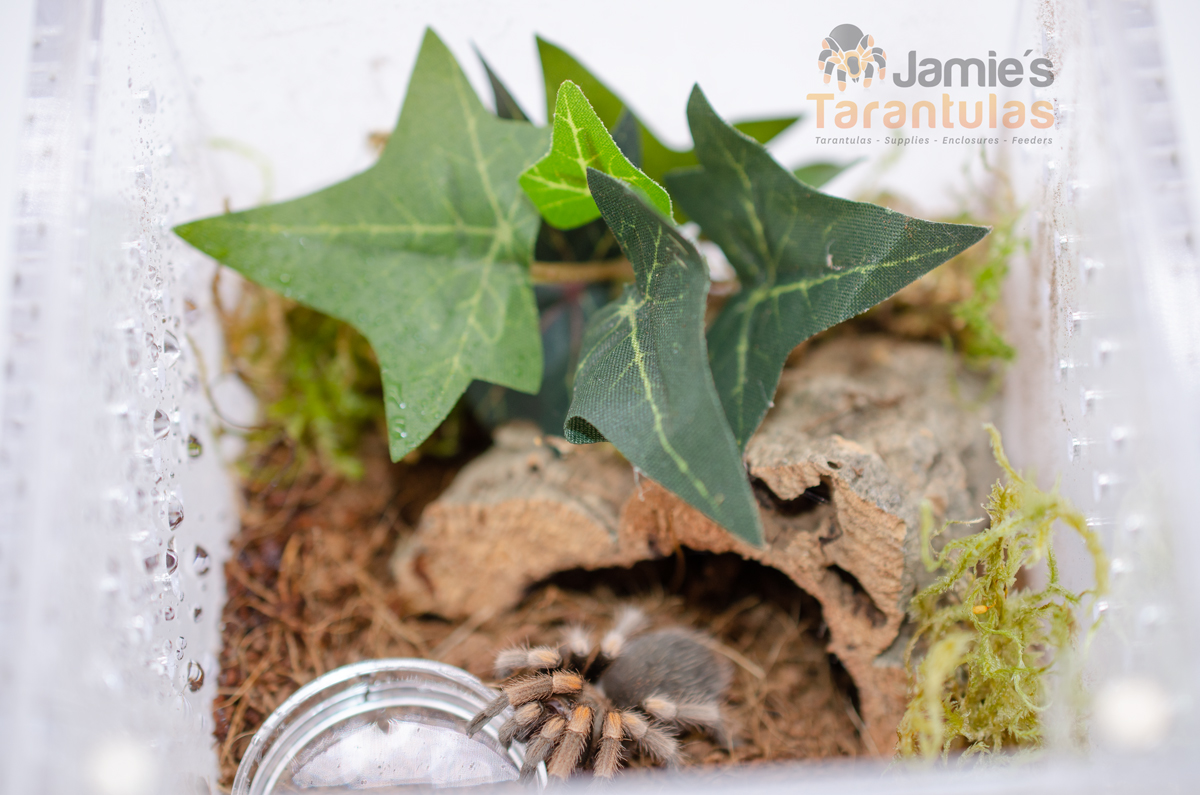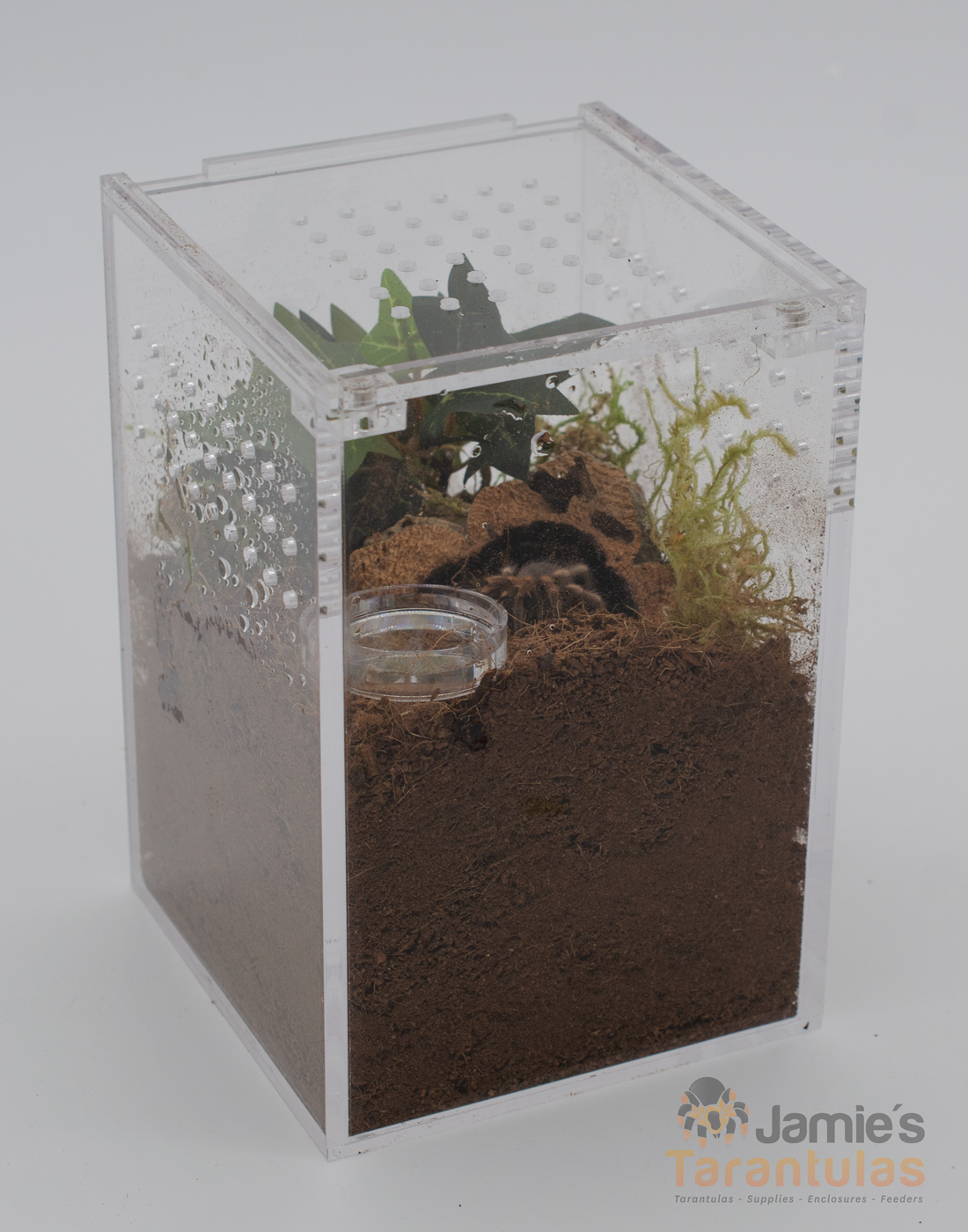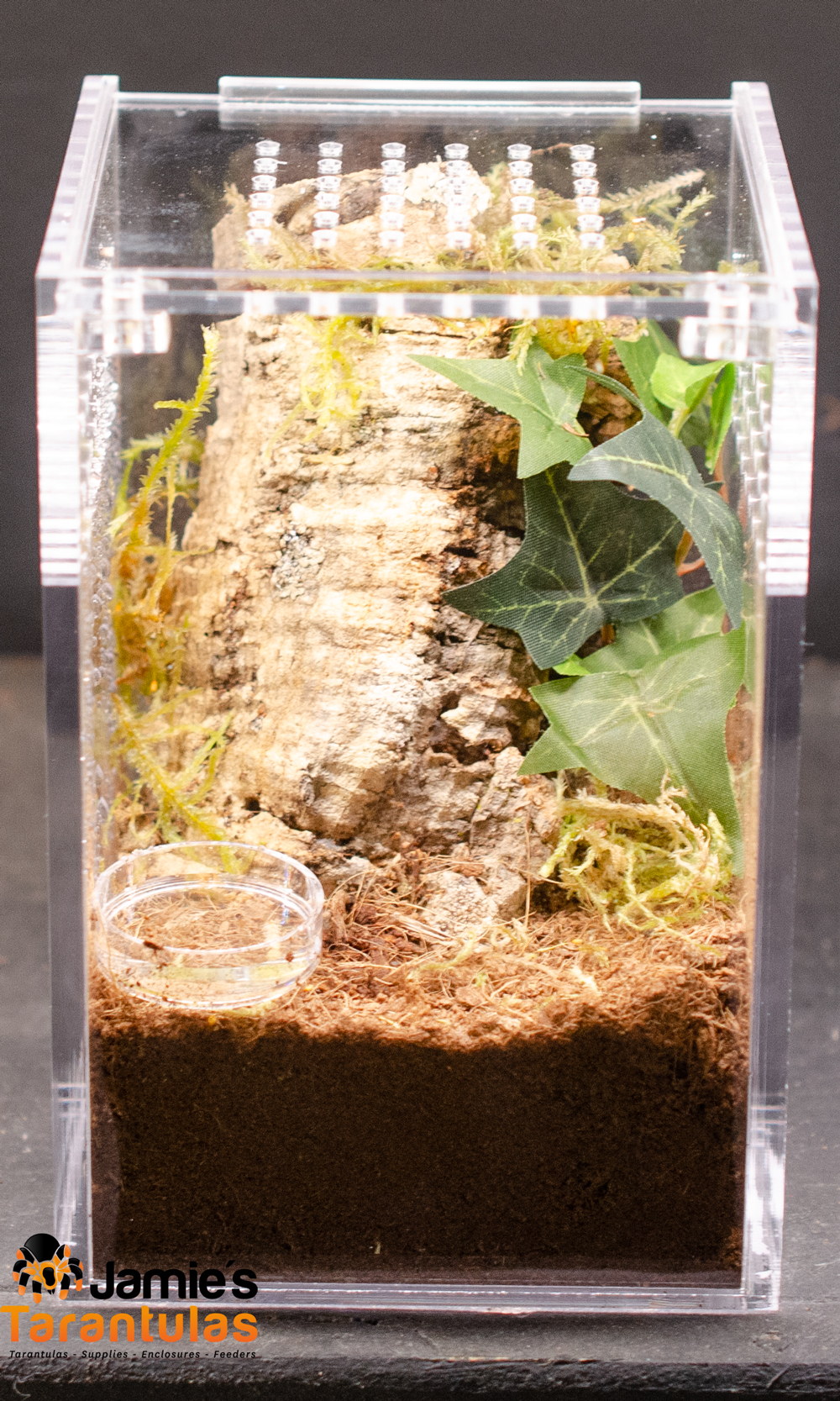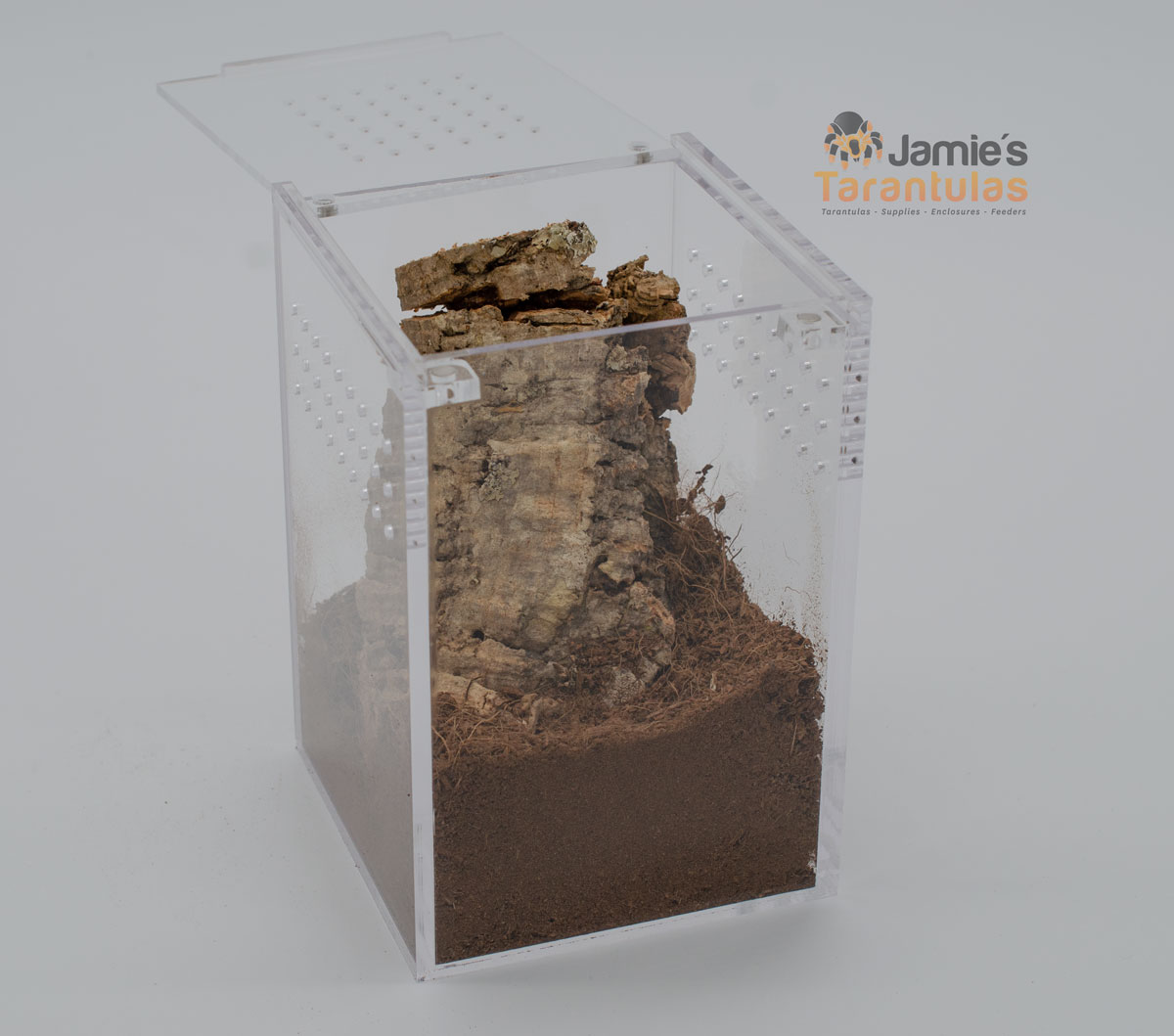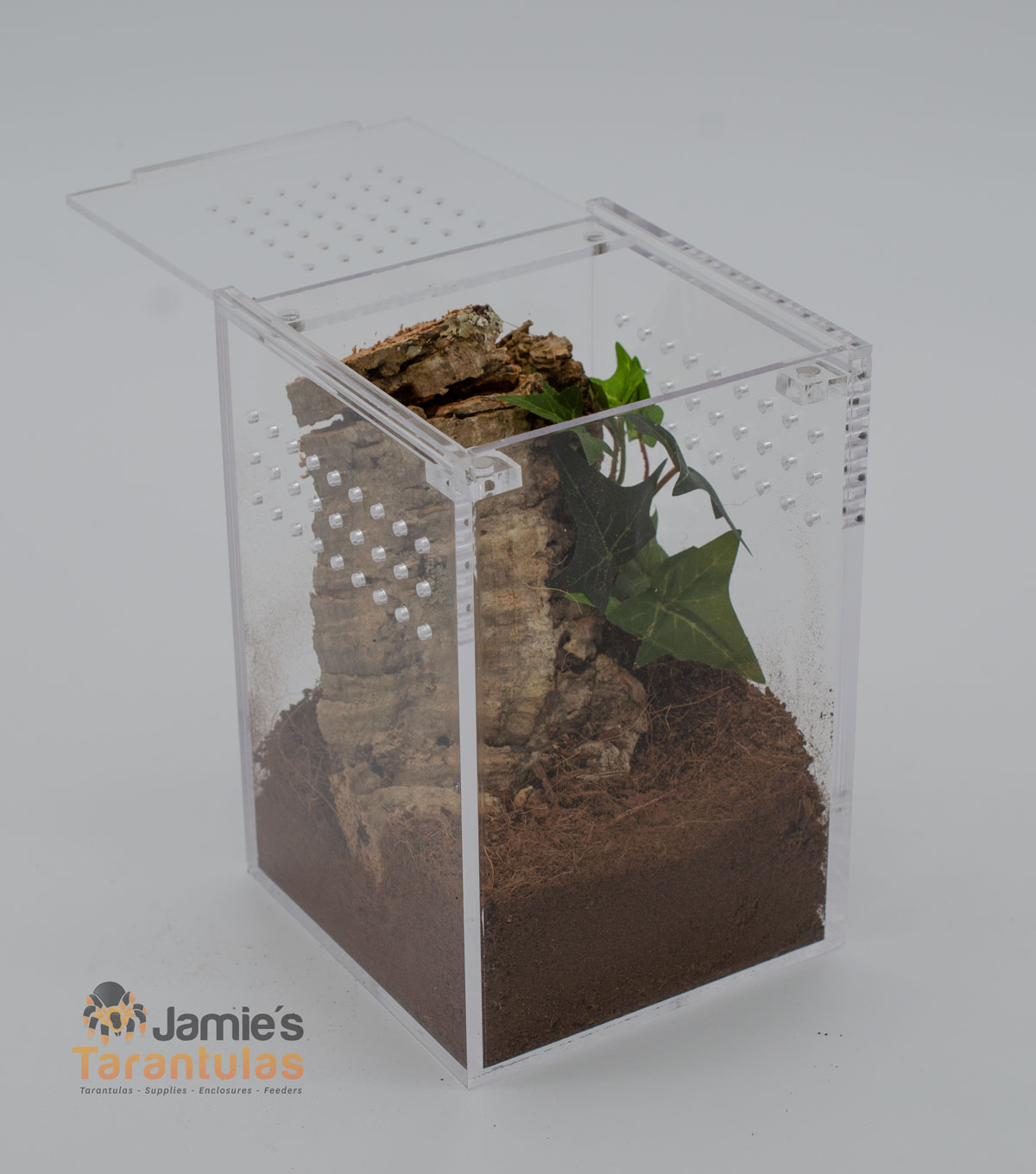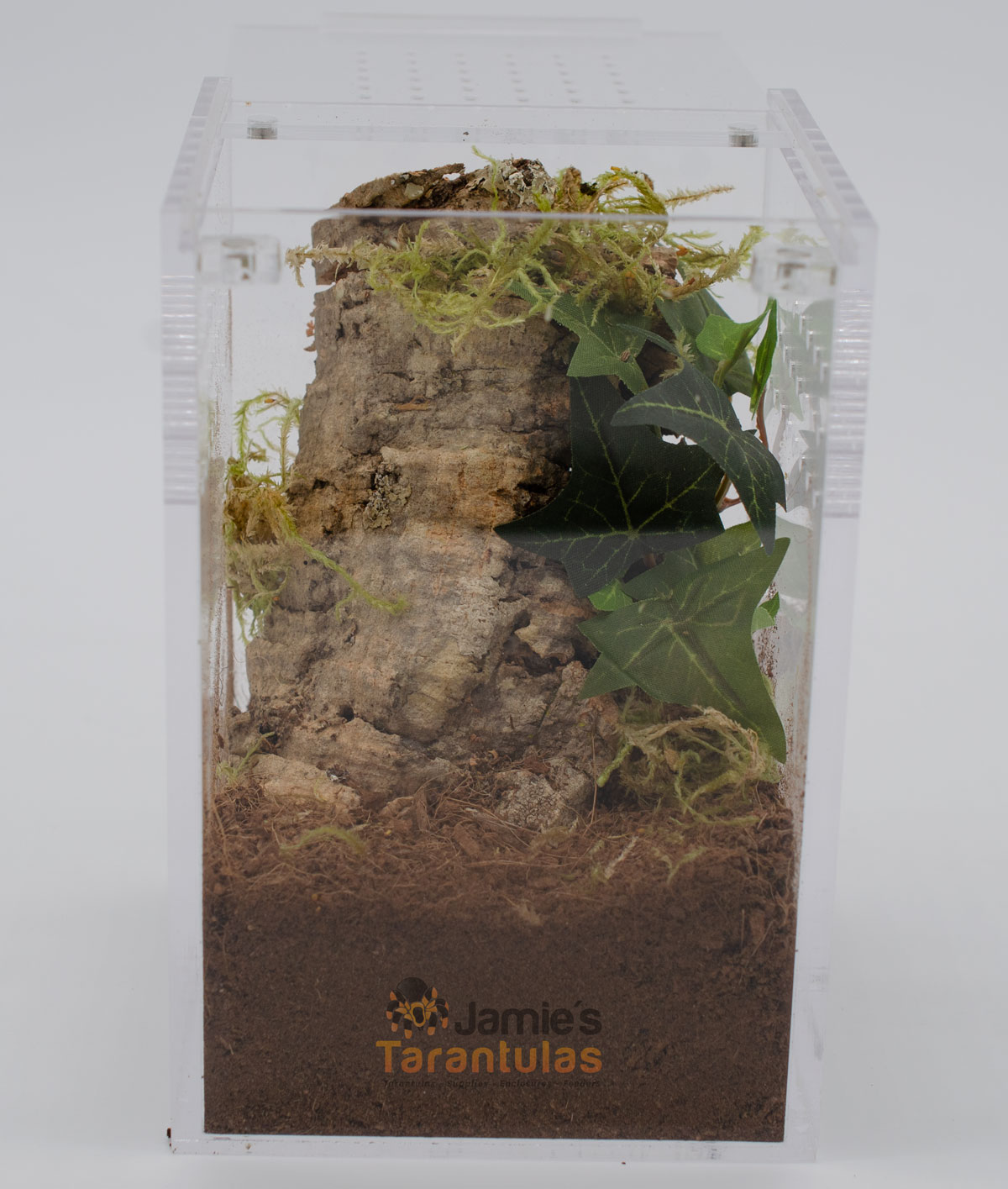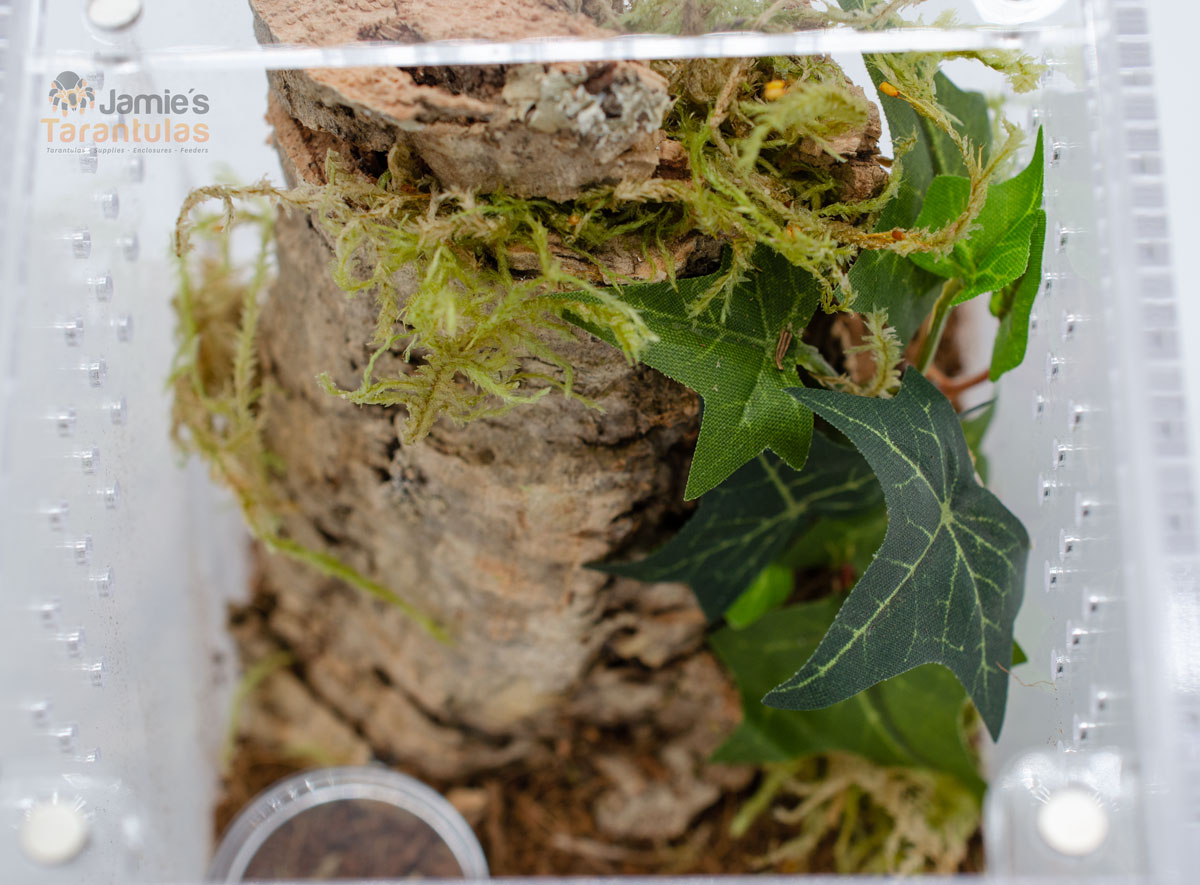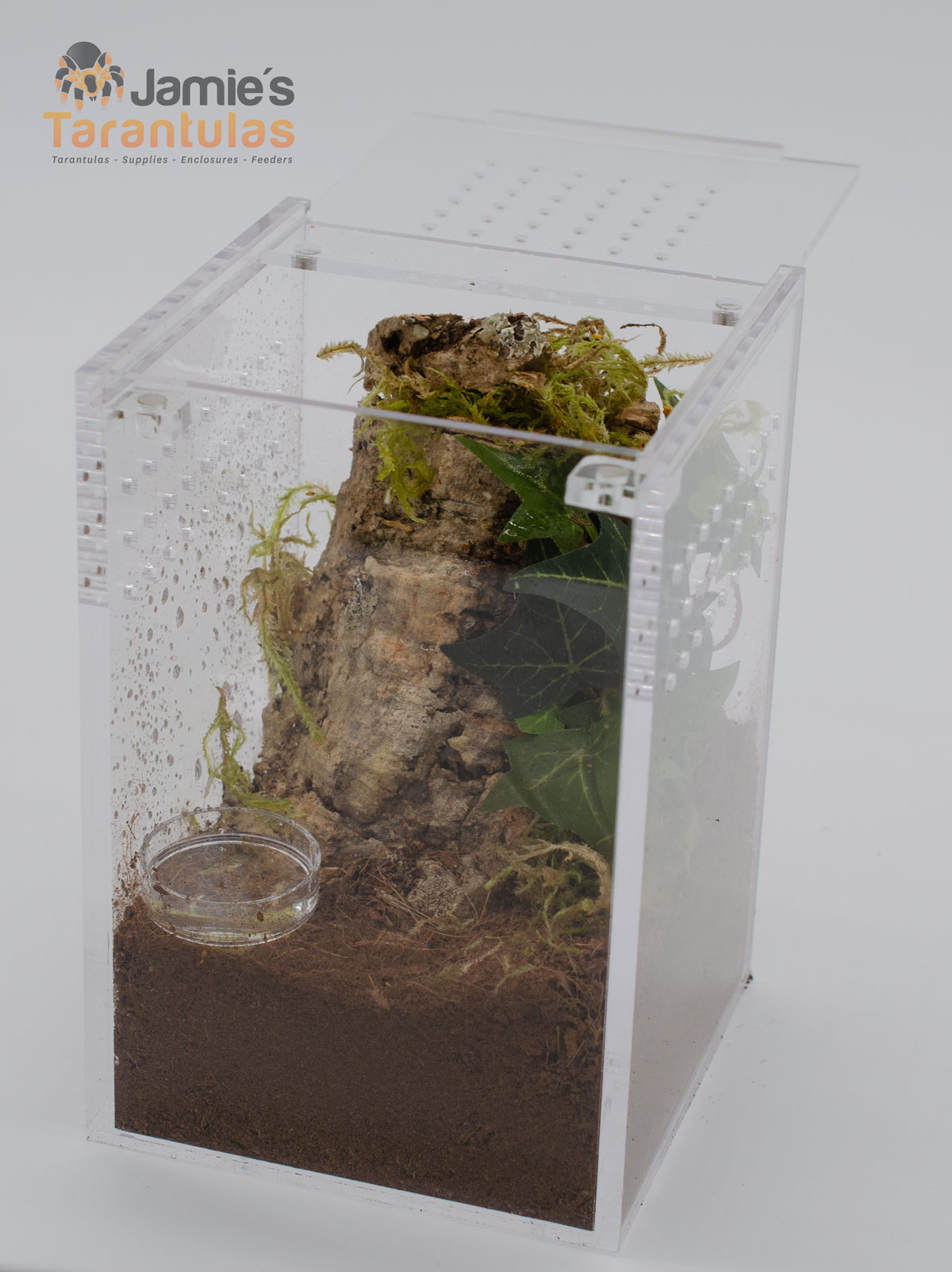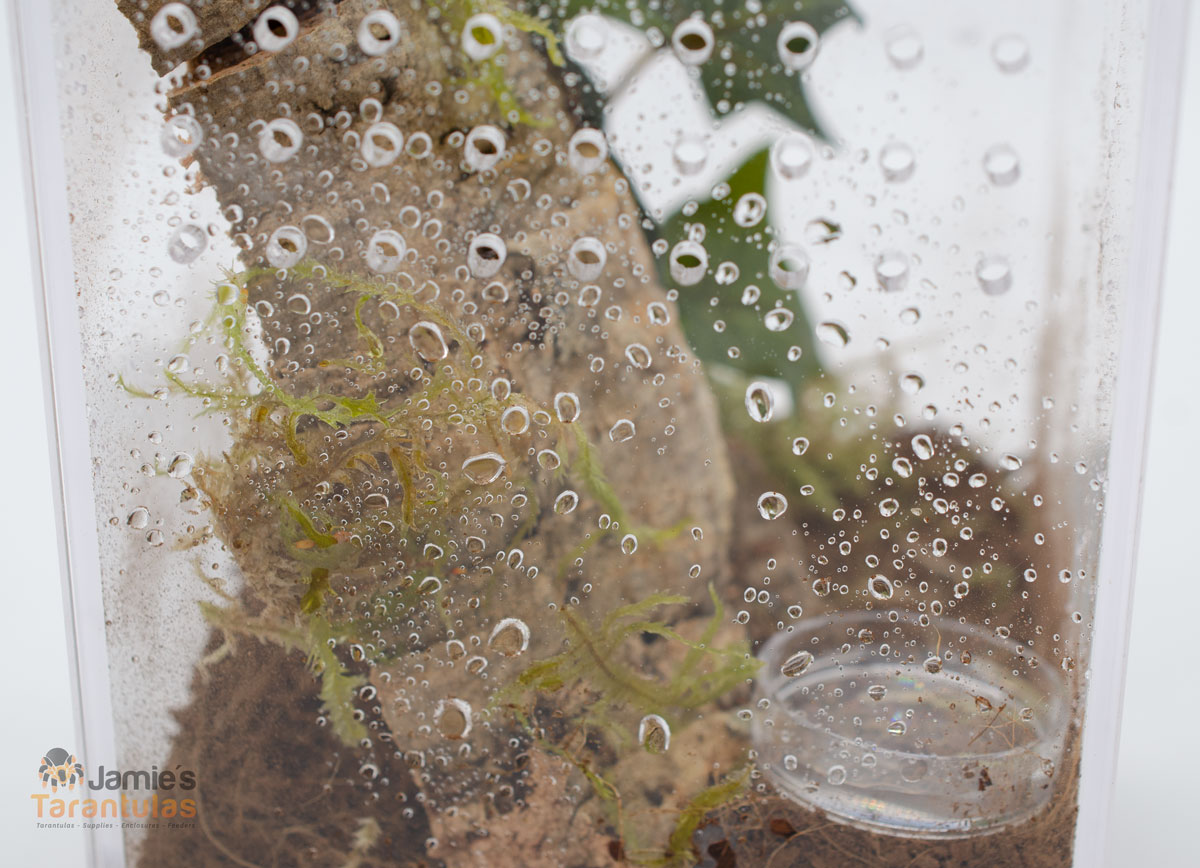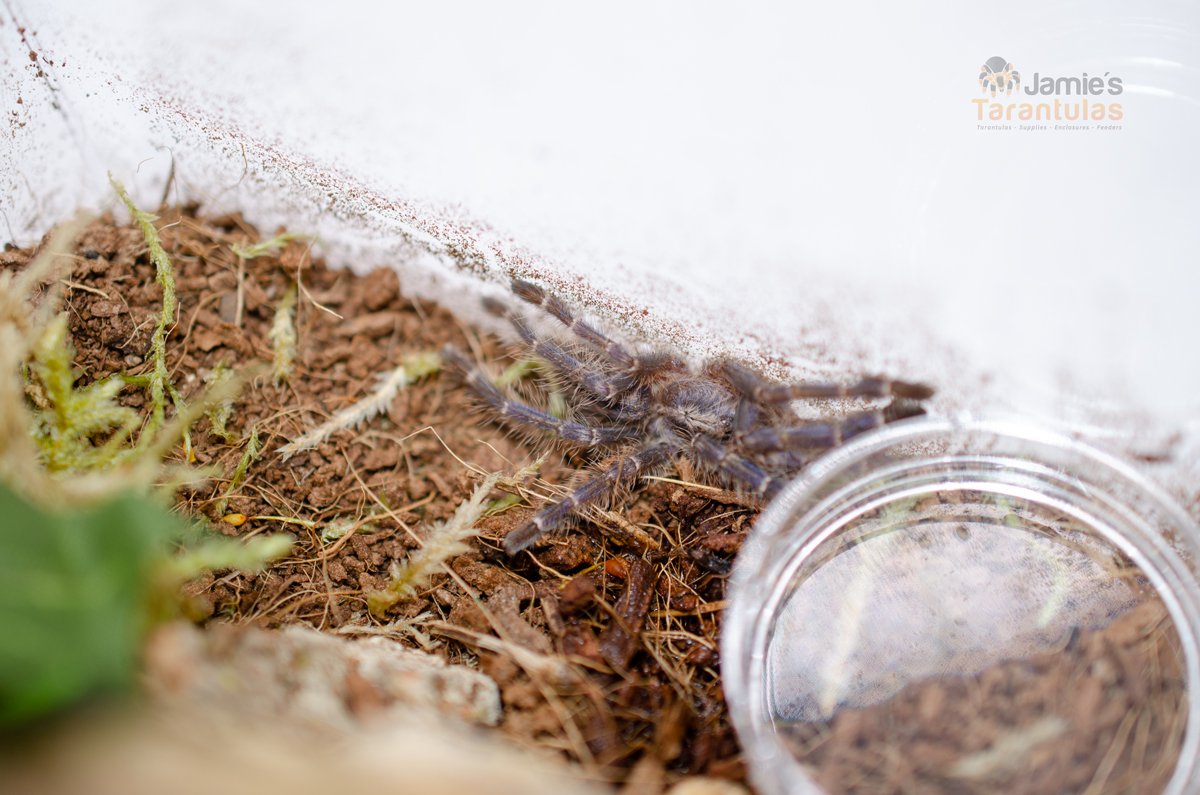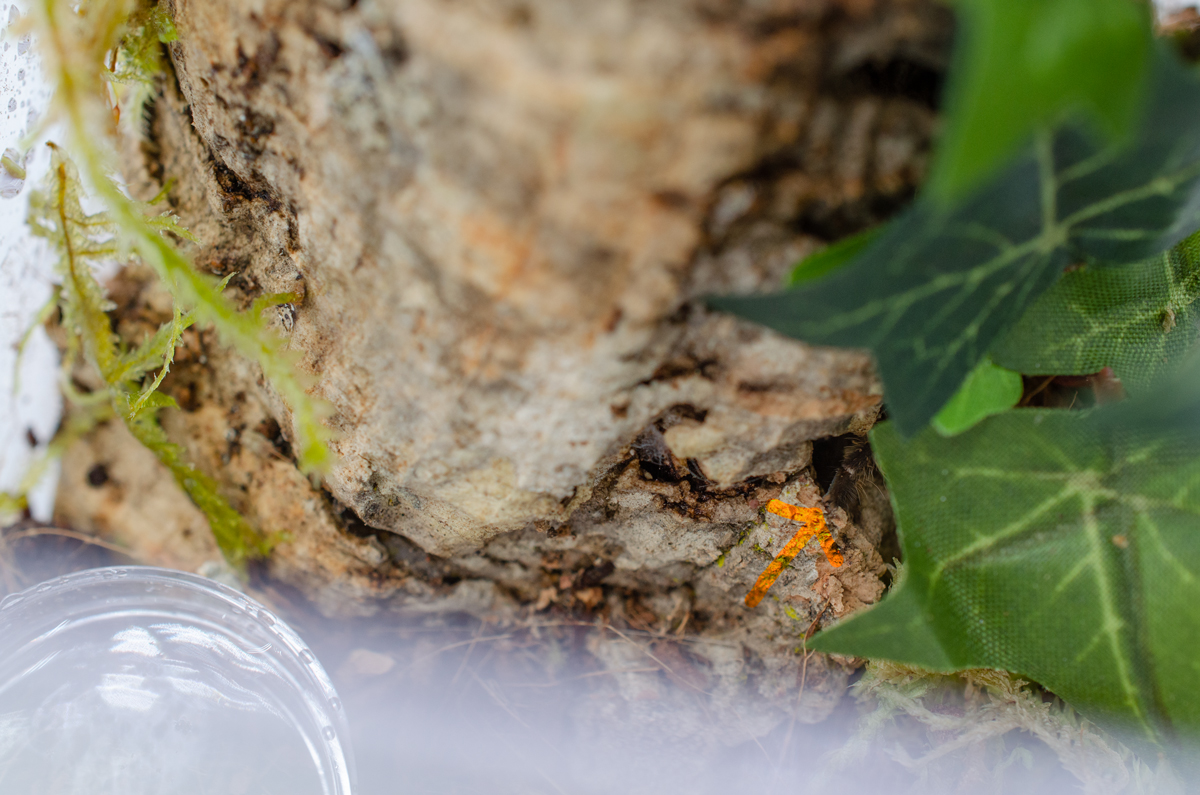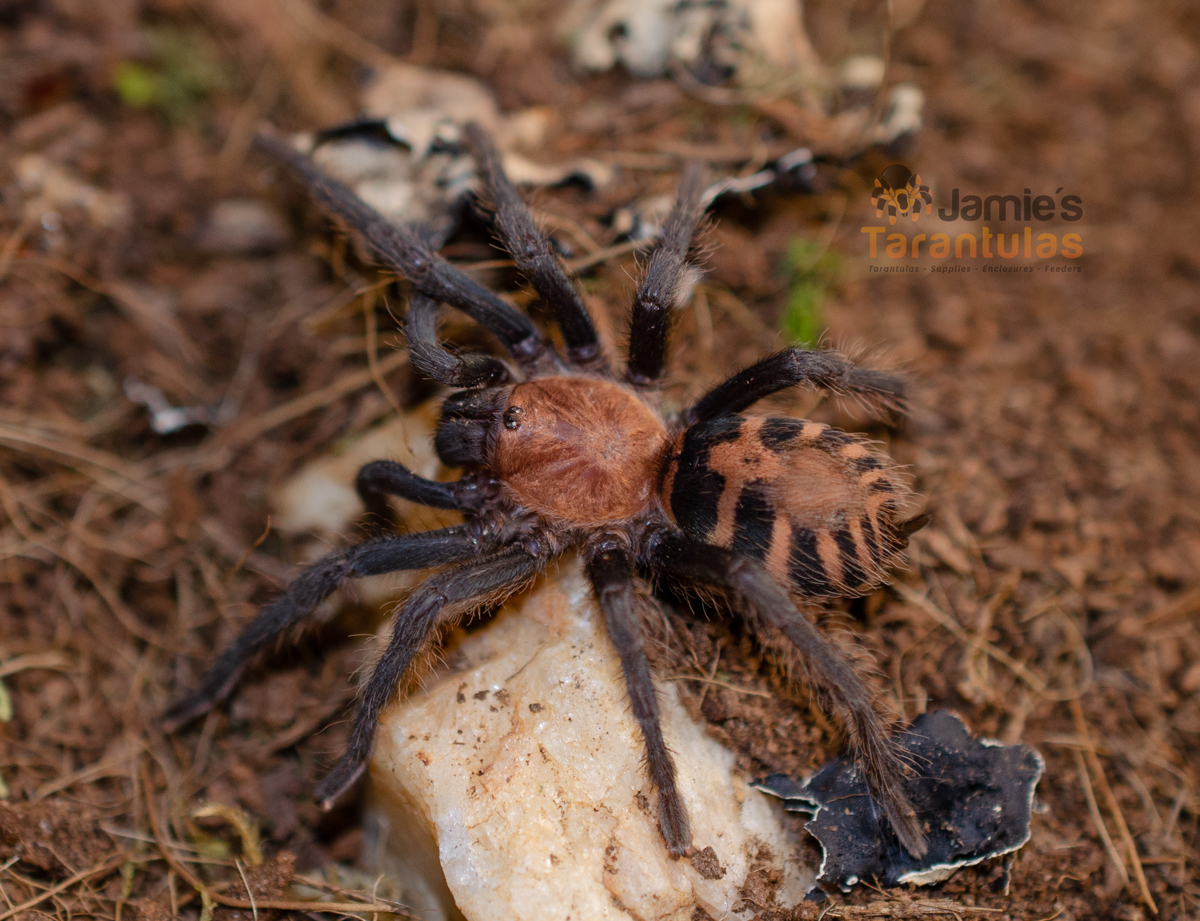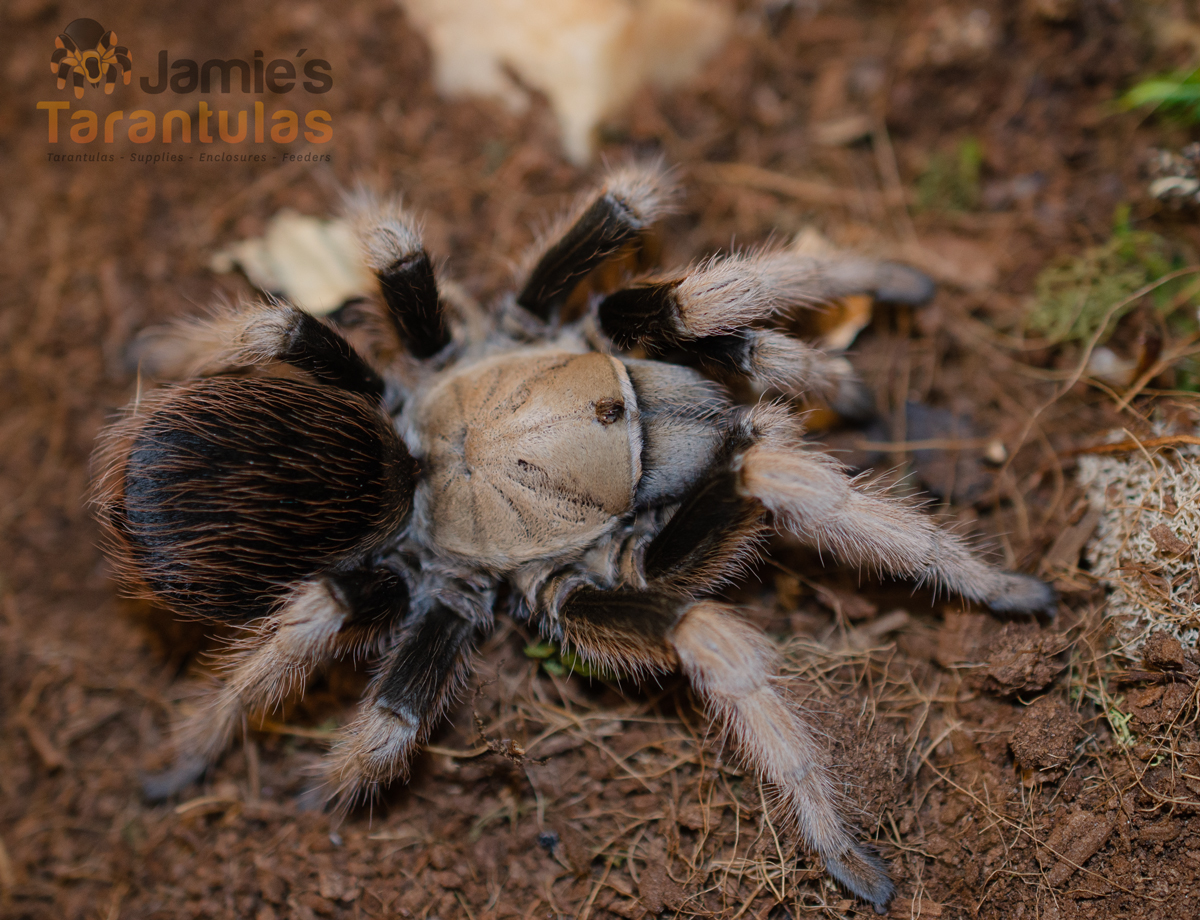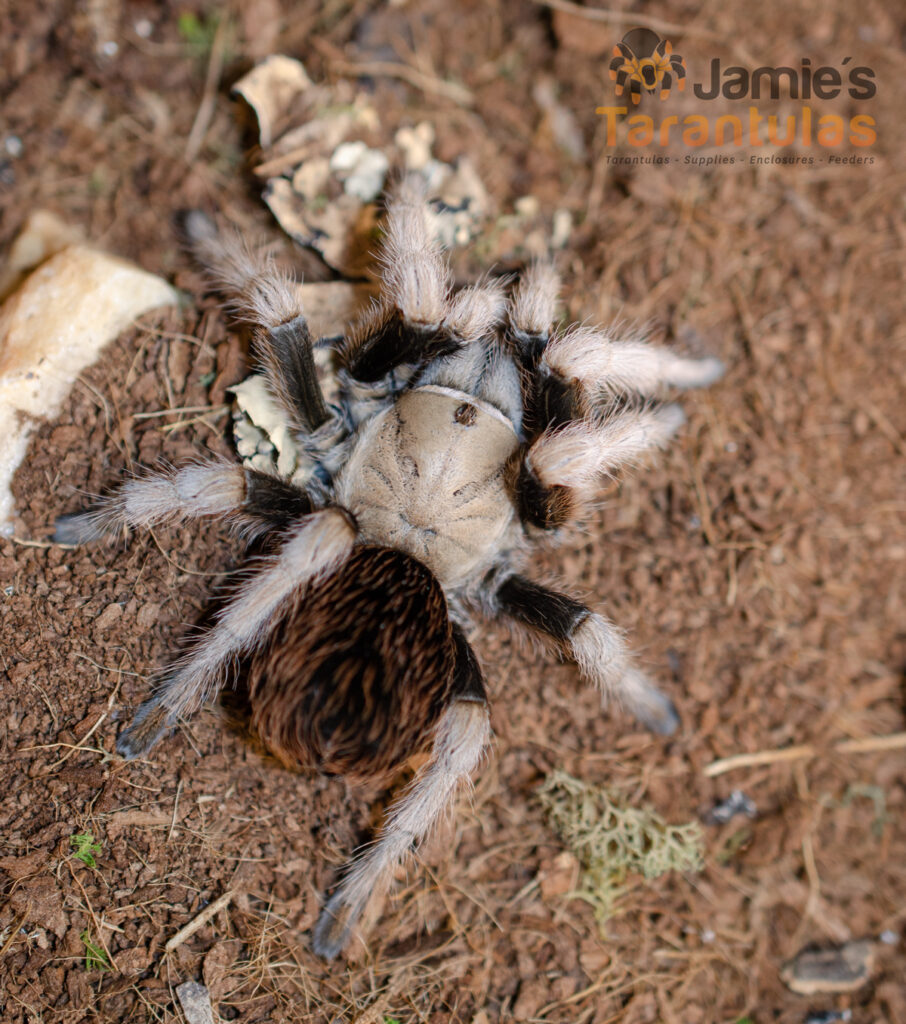In the wild tarantulas are opportunistic hunters and will eat just about anything they can overpower. This is great news for tarantula keepers as there are many feeders to choose from. Here we’ll cover the most popular options.
If you’re ordering your tarantula from us we do our best to make it easy, there should be feeder and enclosure recommendations in the description of every tarantula for sale on our website. If you have any questions please don’t hesitate to contact us. We’re happy to help!
Blatta lateralis:
Blatta lateralis is also known as the Turkestan cockroach, Rusty Red, Red Runner Roach, Turkish Red Roach or simply “lat.” Freshly hatched B. lateralis are often referred to as Pinhead B. lateralis or pinhead lats. Typically “pinhead roaches” refers to Pinhead B. lateralis even though B. lateralis is implied.
Whatever you want to call them, these roaches are a popular feeder for spiderlings as they deliver all the pros of the B. lateralis roach in a small-enough-to-eat package for those teeny spiderlings about 1/2” through about 1”+ we used to have a hard time finding a reliable feeder for. It’s no surprise “pinhead” lateralis are our most popular feeder for small spiderlings.
Pinheads have a very low chance of becoming invasive in fact, I have never known escaped pinheads alone to establish an invasive population. Regardless, please proceed with caution and keep your bugs locked up tight! If a number of larger B. lateralis (or one very determined gravid female) escaped and found conditions where she or they could breed it is possible they could establish a pest population. I have not found this too much of an issue as they are relatively easy to contain (can’t climb smooth surfaces, males flutter fall) and are killed by freezing temperatures. As B. lateralis are a potentially invasive species they may be illegal to possess in certain areas. If you’re in doubt check with your local authorities.
Cons
-Possibly invasive
-Illegal to possess in some areas (such as in Florida)
-Although this active roach does a great job attracting the tarantulas attention it can sometimes be a nuisance to an exposed, unsettled or otherwise stressed spiderling. This is why we recommend removing uneaten food after 24 hours.
-Not suitable for the smallest of spiderlings 1/4” and under
Pros:
-Most small spiderlings 1/3”+ will take this feeder
-Many small and x-small spiderlings will take this feeder pre-killed (frozen/thawed)
-Pinheads alone have extremely low chance of becoming invasive
-Pinheads are a high-protein feeder option
-B. lateralis are active and typically don’t burrow. This does a great job attracting the tarantulas attention making dinner easy for the the tarantula to find.
-Grow quickly
-Prolific breeder
-Can’t climb smooth surfaces
-Nymphs and mature females don’t have wings
-Males flutter fall
-Relatively easy to keep (and keep alive)
-Quiet
-Well-kept colonies shouldn’t produce much if any odor
Dubia:
Dubia are a popular feeder for tarantulas 1 1/2″ and above. They are unlikely to become invasive as they can only breed under specific conditions (above 68 degrees F with proper humidity) and will abort their preganany if disturbed. B. dubia are highly nutritions and ideal for tong feeding.
Aside from not being able to feed them to small spiderlings the only thing I don’t like about B. dubia is their ability to hide in the tarantulas enclosure. This comes with an upside, as B. dubia “running amok” in the enclosure doesn’t seem to bother the tarantula. Many of my larger specimens including breeding females are fed B. dubia. Pictured is an I. mira female enjoying a B. dubia roach.
Cons:
-Can and often do burrow or successfully hide from the tarantula
-Illegal to possess in some areas (such as in Florida)
-Slow growing
-Need specific conditions to successfully breed
-Not suitable for tarantulas under approximately 1 1/2”
Pros:
-Dubia typically won’t disturb a molting tarantula
-As they cannot breed below 68 degrees under specific conditions there is little chance of the dubia becoming invasive, even if many escape.
-Relatively easy to keep
-Quiet
-Easier to grab
-Ideal for tong feeding
-Dubia can’t climb smooth surfaces
-Nymphs and mature females don’t have wings
-Well-kept colonies won’t produce odor
-Males flutter fall
-They are a lot of bug for your buck. A properly sized dubia is a substantial, nutritious meal for a tarantula.
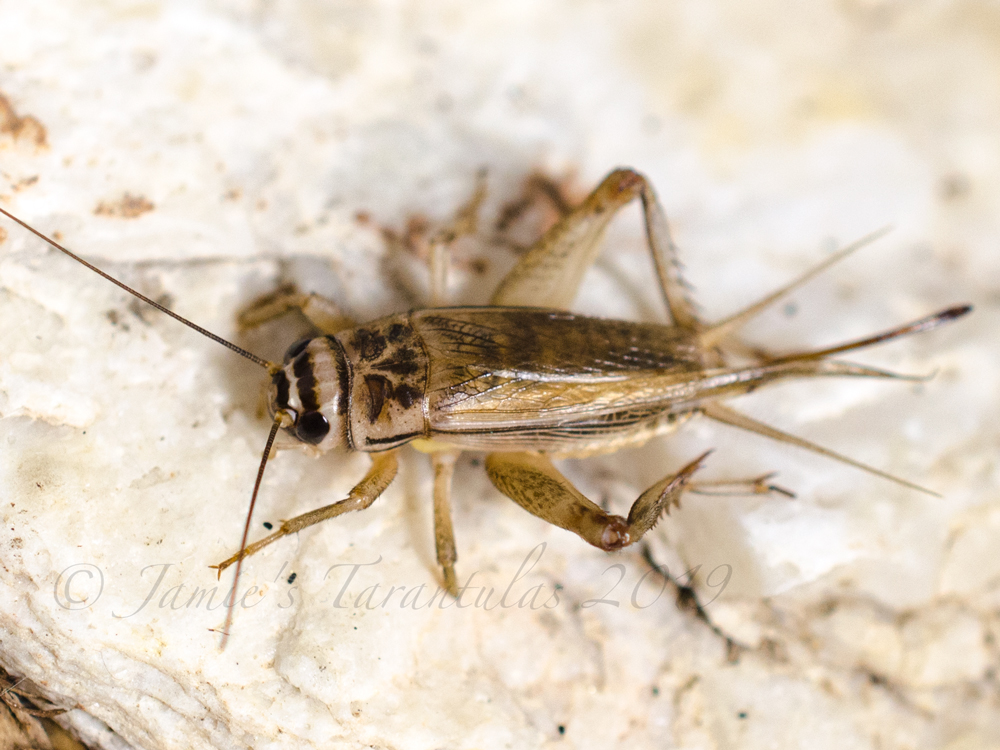
Crickets:
Crickets are probably the most commonly used feeder for larger tarantulas as they’re widely available in medium and large sizes.
Pinhead (or freshly hatched) crickets can make make a fine substitute for pinhead B. lateralis roaches although check before you get your spiderling as pinhead crickets are sometimes difficult to find locally.
Cons
-Crickets have been known to injure or even kill a molting or otherwise vulnerable tarantula.
-It’s often hard to find crickets locally small enough for spiderlings
-Crickets are more difficult to keep alive
-Adults can produce a considerable amount of noise
-Cricket colonies often have a foul odor
-Have been known to bite (I did not believe it until it happened to me!)
Pros:
-There is little chance of the crickets becoming invasive, even if many escape.
-Immature crickets are quiet
-They can’t fly
-They can’t climb smooth surfaces
-Medium and large crickets are typically easy to find locally
Flour Beetle Larvae
We recommend to only feed your spiderlings the white flour beetle larvae rather than the dark mature beetles. This is because the mature beetles can excrete a foul-tasting fluid some spiderlings despise!
Suitable for small spiderlings approximately 1/2” leg-span and less. We typically stop feeding flour beetle larvae to our slings once they reach about 1/2” leg-span or as soon as they’ll start taking the larger feeders. I consider flour beetle larvae too small a feeder once the tarantula reaches about 3/4-4/5” leg-span.
You don’t need to care for your flour beetle colony. The beetles and their larvae will feed and reproduce in the substrate provided with the colony. There is no need to supply additional food or water. If kept warm the Confused Flour Beetle Colony will produce food for many weeks to many months!
Pros:
-Little to no maintenance is required if kept in the proper substrate
-Quiet
-The immature flour beetle larvae are less likely to bother a stressed or molting spiderling
-Ideal for tarantulas under 4/5” leg-span
-Fast growing
-Easy to breed
Cons
-If the beetles escape they will do their best get into unsecured flours and grains in your pantry
-The immature larvae can be difficult to spot
-They can sometimes burrow in the tarantulas enclosure
-Not suitable for tarantulas over about 4/5” leg-span
-The mature beetles excrete a foul tasting substance that can discourage slings from feeding (note: the immature flour beetle larvae do not excrete this substance which is one of the reasons we recommend feeding the larvae over the beetles)
-The active mature beetles can be a nuisance to an exposed, unsettled or otherwise stressed spiderling (note: the immature flour beetle larvae do not seem to bother stressed spiderlings which is another reason we recommend feeding the larvae over the beetles)
Flightless Fruit Flies:
There are two types of flightless flies commonly used as feeders. Drosophila melanogaster & Drosophila hydei. D. hydei are suitable for small spiderlings approximately 1/2-3/4” leg-span and less and are typically too small a feeder once the tarantula reaches about 3/4-4/5” leg-span. D. melanogaster are suitable for extra-small spiderlings approximately 1/2” leg-span and less.
Flightless Fruit Flies are not as nutritious as other feeder options. Although they’re fine for very small spiderlings (who can’t eat much else) we recommend once the spiderling is large enough to change and/or supplement it’s diet with a more nutritional food source.
Pros:
-Little to no maintenance is required if kept in the proper substrate
-Quiet
-Low to no odor
-Ideal for spiderlings under 3/4” leg-span
-Fast growing
-Easy to breed
-Typically won’t bother a molting tarantula
Cons
-Not suitable for tarantulas over about 4/5” leg-span
-FFF can climb smooth surfaces
-Can be cumbersome to feed
-Lower nutrition
Mealworms:
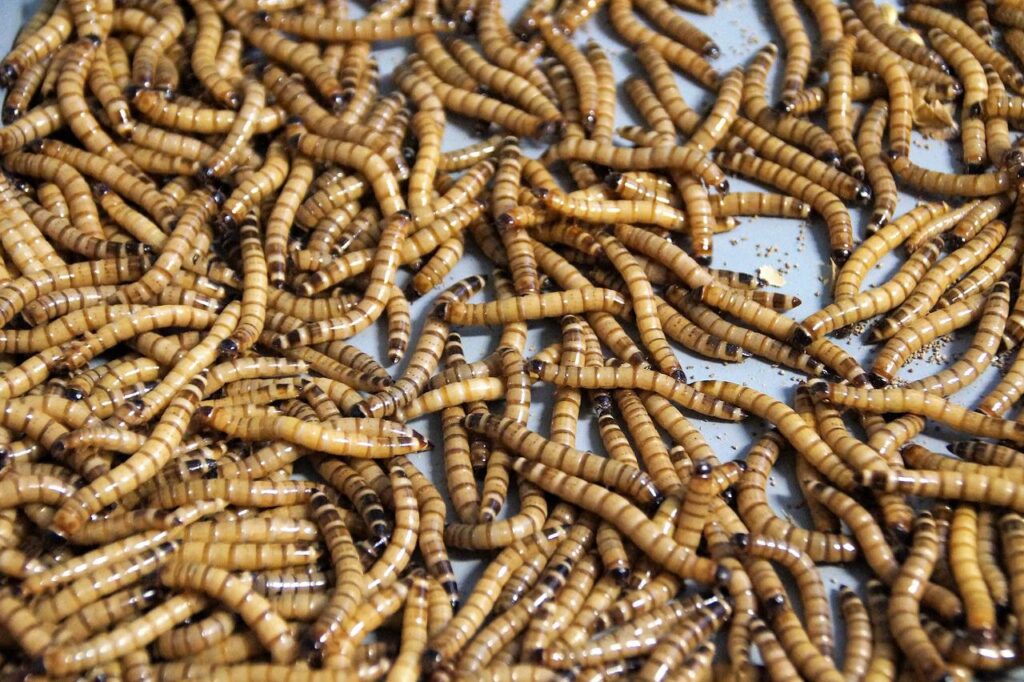
Mealworms are often easy to find & care for and are sometimes used as a food source for tarantulas. I have even seen spiderlings as small as 1/2” eat cut up mealworms.
Pros:
-Cannot climb smooth surfaces
-Little to no maintenance is required if kept in the proper substrate
-Quiet
-They are less likely to bother or injure a stressed or molting spiderling
-Ideal for tarantulas over 3/4-1” leg-span
-Relatively fast growing
-Easy to breed
Cons
-They can sometimes burrow in the tarantulas enclosure
-It is recommend to supplement with other feeders if possible as
Mice and other vertebrates:
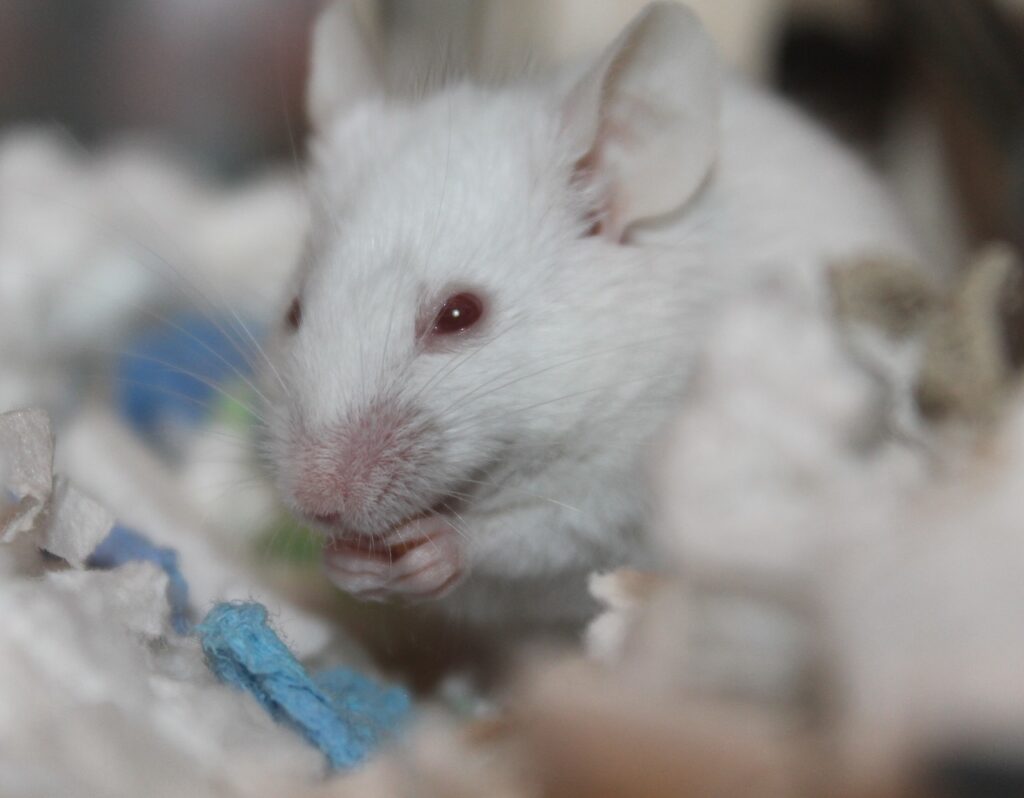
In captivity we do not recommend feeding vertebrates (such as mice) as they could could injure your tarantula. Although the tarantula might go after vertebrate prey in the wild we do not believe vertebrates are necessary for your tarantula to have a “complete” diet.
Wild-caught feeders:
Always make sure your feeders are from a verified source. Never feed your tarantula wild-caught food as it could be poisonous or harbor disease that could harm or even kill your pet
Feeder Pros and Cons Recap:
Ease of care – How easy are these feeders are to care for?
Quiet – Do the feeders produce noise?
Possibly invasive – If these feeders escape is it possible they’ll reproduce on their own?
Feeding response – How well does the tarantula respond to the feeder?
Risk Level – is the likelihood the feeder can cause stress, injury or death to a tarantula
Tarantula size range – This is a general guide to help determine which feeder can be used with what size tarantula, measured in inches leg-span “DLS”

*Mature crickets make noise however, immature crickets do not. **Dubia are better at hiding from a hungry tarantula than any specific feeder on this list. This is why we have given them a lower feeding response rating. We still love the nutritious, easy to handle dubia and have found we get fantastic results tong feeding or dropping the dubia in front of the hungry tarantula. ***Flour beetles have the uncanny ability to get into… flour. If you keep your beetles in their enclosure and or/ keep your flours airtight there shouldn’t be a problem with four beetles becoming invasive. **** I know many keepers who as a precaution crush the crickets head before offering it to their pet tarantula. This way the cricket is unlikely to harm their pet. ***** Healthy roach colonies shouldn’t produce odor.
Feeder size:
Ideally, the length of the prey item should be no longer than the spiderlings body length. As tarantulas grow the prey we give them relative to their size will decrease. For adult tarantulas feed prey the same size or smaller than the length of the adults’ carapace. This “rule of thumb” is a basic reference we use to help beginner keepers select feeders their tarantula can easily overpower, although some tarantulas might take larger prey we recommend first starting small.

What we feed our tarantulas:
As of this writing approximately 90% or more of my collection eats B. laterals as their primary feeder. Some of our tarantulas up to about 5-6” leg-span eat the large/adult B. lateralis as their primary food source although many of our larger/heavier tarantulas eat dubia, especially during the breeding season.
We use tiny B. lateralis “pinheads” for small spiderlings from about 1/2.” Recently we have been starting them on frozen/thawed pinhead B. lateralis as small as 1/3” leg-span.
Those extra-small spiderlings (typically those under 1/3-1/2”) who are too tiny even for the the youngest B. lateralis eat four beetle larvae.
We’ve found there are many different ways to keep a tarantula well-fed and what works for us may not be the best solution for you. This is why we have composed this article so you can decide which feeder(s) best fit you and your tarantula(s).
Feeding Small Spiderlings:
Before purchasing a small spiderling be sure you’ve figured out what you’re going to feed it! Not all pet stores will carry food small enough for the smallest spiderlings.
Most of our spiderlings 1/2” and larger feed on pinhead B. laterals roaches. Nearly everything that eats pinhead roaches can also eat pinhead crickets. If we have extra-small and/or finicky eaters we may feed them prekilled pinheads or flour beetle larvae. If you have finicky spiderlings you might also try flightless fruit flies or cut up mealworms. Some spiderlings will eat pre-killed prey while some will not depending on the individual tarantulas preference.
We typically stop feeding flies and/or flour beetles to our slings once they reach about 1/2” leg-span or as soon as they’ll start taking the larger feeders.
How Often?
Once a tarantula has SETTLED IN (and provided it’s not molting) we feed about one meal weekly. The size of the roach (or roaches) we feed depends on the size of the spider and how much weight we want it to gain.
Experience is the best teacher.
We typically feed one “properly sized” roach a week. If the feeders are on the smaller side and the tarantula has already taken one you can offer two or three at a time. If the tarantula is gaining weight too quickly we might feed less often or offer smaller feeders.
WATER – Don’t forget to mist!
The substrate should be subtly moist (somewhat dependent on the species) and the trantula should have “dew” to drink off the sides on the enclosure a few times a week. There is a bit of a learning curve when it comes to misting. We recommend new keepers mist one corner of the enclosure. This way the tarantula can choose between moist and dry substrate and the new keeper can adjust based on the tarantulas preferences.
Tarantulas under about 2″ don’t need nor do we recommend using a water bowl. Once the tarantula is large enough it can be given a shallow, wide dish in order to drink from. Please note tap and/or well water can contain chemicals that might be harmless to humans but can cause trouble for the little tarantula. I have seen DKS result in using tap water and strongly recommend against it. We use RO water for all our tarantulas.
TROUBLESHOOTING – MY TARANTULA IS NOT EATING!?
Settling in/recently arrived:
Tarantulas are much less likely to eat soon after arrival. They need time to adjust to their new surroundings.
A tarantula will appreciate being left alone and quiet during this time. It is normal for the tarantula to hide until it feels safe and and is ready to come out and wait for a meal. This can take a few days to a few weeks depending on the particular specimen. Be sure your pet has water during this time.
Feeders running amok:
New keepers will sometimes flood the enclosure with multiple prey items. While this is done all in good intentions it can cause a tarantula much stress. If the tarantula is under enough stress it will not eat.
It is very important to remove uneaten prey items running amok in the enclosure if the tarantula has not eaten them in 12-24 hours. In the wild there wouldn’t be a party of prey insects lining up at the tarantulas doorstep. One every now and then will do just fine!
If feeding dubia or other quiet feeders don’t worry about digging them out. A few dubia typically won’t bother a tarantula while a human digging though the enclosure probably will. I especially like using dubia with my breeding females as the feeders are large and I don’t have to worry about them bothering momma spider.
It’s not hungry:
Really tarantulas don’t eat that much. We feed our tarantulas about once a week and even so they might refuse food if they are not hungry and will often skip 1-4 weeks for a molt.
In the cooler months tarantulas tend to eat even less.
Molting:
It is typical for a tarantula tarantula to hide and/or refuse food while molting. A tarantula will typically not eat in pre or post-molt. During this time your pet may lock itself in a burrow or tube web while occasionally specimens very comfortable in their enclosure might molt in the open.
Be patient with your little friend, this is a difficult and time consuming process during which the tarantula is very vulnerable. It is important to keep the enclosure misted as usual while withholding food during this time.
Tarantulas typically come out of their burrow or tube web when they have molted, hardened and are ready to eat. I typically wait for them to come out “looking hungry” before I offer food. This can take on average 1-4 weeks.
Feeders are too big:
Are the feeders larger than the ratios listed above? If so try smaller prey. If you don’t have immediate access to smaller prey you might try pre-kill or cutting up larger prey items. Not all tarantulas will eat pre-killed food. It depends on the species personal preference.
Feeders are too small:
Are the feeders less than 25-30% of the ratios listed above? If so try larger prey.
New Prey Items:
Tarantulas who have never a particular prey item might be wary of the new food. They can tell the difference. Depending on the specimen they might refuse this strange new prey the first, second or third time offered. Be patient, eventually the tarantula will get hungry enough to try something new.
Injuring and Pre-killing feeders:
Tarantulas who are being fed too soon, appear bothered by the live feeders and/or those being offered new prey or prey larger than what the specimen is used to might want to try offering a pre-killed feeder. Simply offer a frozen/fully thawed, crushed or disabled feeder. If the tarantula is healthy and not molting this might be just what it needs to start laying webbing and settling in to this new place.
Although not all tarantulas will take pre-killed prey, most will under the right circumstances. Even those picky spiders who won’t eat anything they didn’t kill might benefit from an injured roach (best done by cursing it’s head-gross!)
